What does cirrhosis do to the body. Understanding Cirrhosis: Symptoms, Causes, and Treatment Options
How does cirrhosis affect the body. What are the main symptoms of cirrhosis. What causes cirrhosis. How is cirrhosis diagnosed. What are the treatment options for cirrhosis. Can cirrhosis be reversed. When is a liver transplant necessary for cirrhosis.
The Impact of Cirrhosis on the Human Body
Cirrhosis is a serious liver condition that can have far-reaching effects on the entire body. As scar tissue replaces healthy liver cells, the organ’s ability to function properly is compromised. This leads to a cascade of health issues that can affect multiple systems within the body.
The liver plays a crucial role in over 500 vital functions, including:
- Filtering toxins from the blood
- Producing bile to aid in digestion
- Storing energy in the form of glycogen
- Synthesizing proteins essential for blood clotting
- Regulating blood sugar levels
- Producing cholesterol and other important molecules
As cirrhosis progresses, these functions become impaired, leading to various complications throughout the body.

How does cirrhosis affect the digestive system?
Cirrhosis can significantly impact the digestive system. The reduced production of bile can lead to difficulties in digesting fats and absorbing fat-soluble vitamins. This may result in malnutrition and weight loss. Additionally, the impaired liver function can cause a buildup of toxins in the blood, leading to a condition called hepatic encephalopathy, which affects brain function and can cause confusion, personality changes, and even coma in severe cases.
What are the effects of cirrhosis on the cardiovascular system?
Cirrhosis can have profound effects on the cardiovascular system. As the liver becomes scarred, blood flow through the organ is restricted, leading to increased pressure in the portal vein (portal hypertension). This can cause the development of enlarged blood vessels (varices) in the esophagus and stomach, which are prone to bleeding. Portal hypertension can also lead to fluid accumulation in the abdomen (ascites) and legs (edema).

Recognizing the Symptoms of Cirrhosis
Identifying the symptoms of cirrhosis is crucial for early diagnosis and treatment. While early-stage cirrhosis may not present noticeable symptoms, as the condition progresses, various signs become apparent.
What are the early signs of cirrhosis?
Early signs of cirrhosis can be subtle and may include:
- Fatigue and weakness
- Loss of appetite
- Nausea
- Mild abdominal discomfort
- Weight loss
These symptoms are often non-specific and can be attributed to various other conditions, making early diagnosis challenging.
What are the advanced symptoms of cirrhosis?
As cirrhosis progresses, more severe symptoms may develop:
- Jaundice (yellowing of the skin and eyes)
- Itchy skin
- Easy bruising and bleeding
- Swelling in the legs and abdomen
- Confusion and difficulty concentrating
- Dark, tarry stools or pale, clay-colored stools
- Redness in the palms of the hands
These symptoms indicate more advanced liver damage and require immediate medical attention.
Underlying Causes of Cirrhosis
Understanding the causes of cirrhosis is essential for prevention and management of the condition. While there are numerous potential causes, some are more common than others.

What are the most common causes of cirrhosis?
The most frequent causes of cirrhosis include:
- Chronic alcohol abuse
- Hepatitis B and C infections
- Non-alcoholic fatty liver disease (NAFLD)
- Non-alcoholic steatohepatitis (NASH)
Chronic alcohol abuse remains a leading cause of cirrhosis worldwide. The liver can only process a certain amount of alcohol at a time, and excessive consumption over many years can lead to significant liver damage and scarring.
Are there less common causes of cirrhosis?
While less frequent, other causes of cirrhosis include:
- Autoimmune hepatitis
- Primary biliary cholangitis
- Hemochromatosis (iron overload)
- Wilson’s disease (copper accumulation)
- Certain medications and toxins
- Cystic fibrosis
In some cases, the cause of cirrhosis may remain unknown, a condition referred to as cryptogenic cirrhosis.
Diagnostic Approaches for Cirrhosis
Accurate diagnosis of cirrhosis is crucial for determining the appropriate treatment plan. Healthcare providers use a combination of methods to diagnose and assess the severity of cirrhosis.

What are the primary diagnostic tools for cirrhosis?
The main diagnostic tools for cirrhosis include:
- Blood tests to assess liver function and look for signs of liver damage
- Imaging tests such as ultrasound, CT scans, and MRI
- Liver biopsy, which involves taking a small sample of liver tissue for examination
- Elastography, a non-invasive test that measures liver stiffness
At Mayo Clinic, specialists use advanced diagnostic techniques, including magnetic resonance elastography, which provides detailed maps of liver stiffness and can detect cirrhosis at earlier stages than traditional methods.
How is the severity of cirrhosis assessed?
The severity of cirrhosis is typically assessed using scoring systems such as:
- Child-Pugh score
- Model for End-Stage Liver Disease (MELD) score
- Fibrosis-4 (FIB-4) index
These scoring systems take into account various factors including blood test results, presence of complications, and overall liver function to determine the prognosis and guide treatment decisions.
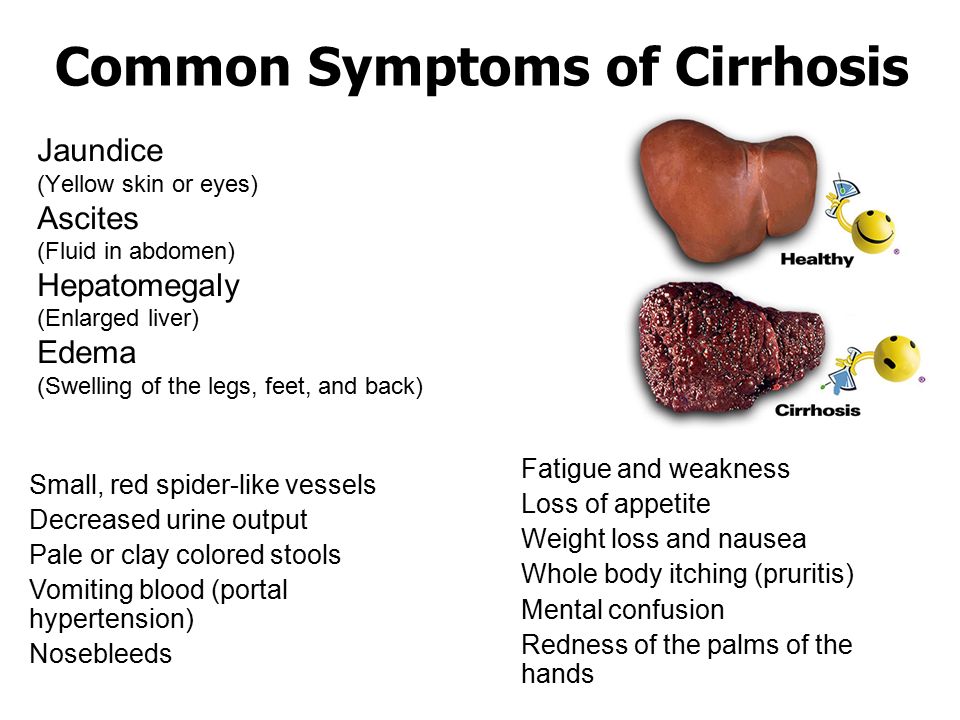
Treatment Options for Cirrhosis
While cirrhosis cannot be cured, various treatment options aim to slow its progression, manage symptoms, and prevent complications.
What are the main goals of cirrhosis treatment?
The primary objectives of cirrhosis treatment include:
- Addressing the underlying cause (e.g., treating hepatitis, stopping alcohol consumption)
- Preventing further liver damage
- Managing complications
- Improving quality of life
Treatment plans are tailored to each individual based on the cause and severity of their cirrhosis.
What medications are used to treat cirrhosis?
Various medications may be prescribed to manage cirrhosis and its complications:
- Diuretics to reduce fluid buildup
- Beta-blockers to lower portal hypertension
- Lactulose or rifaximin to treat hepatic encephalopathy
- Antiviral medications for hepatitis B or C
- Immunosuppressants for autoimmune hepatitis
In some cases, medications to support liver function or address specific nutritional deficiencies may also be prescribed.
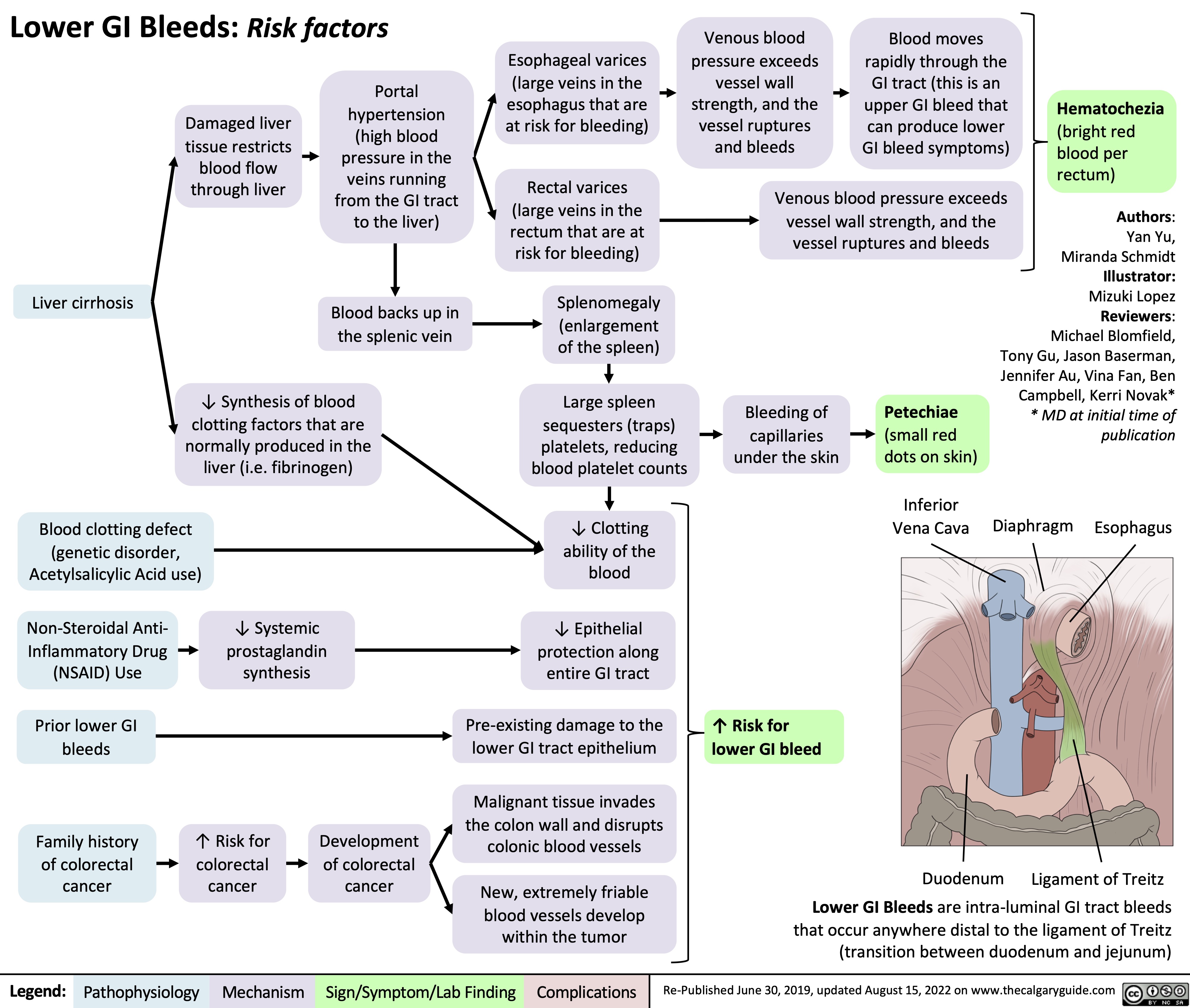
Lifestyle Changes and Management Strategies
Adopting certain lifestyle changes can help manage cirrhosis and improve overall health outcomes.
What dietary changes are recommended for cirrhosis patients?
Dietary recommendations for cirrhosis patients often include:
- Limiting sodium intake to reduce fluid retention
- Consuming adequate protein to support liver function and prevent muscle wasting
- Avoiding alcohol completely
- Eating a balanced diet rich in fruits, vegetables, and whole grains
- Limiting processed foods and saturated fats
A registered dietitian can provide personalized nutritional guidance based on the individual’s specific needs and the severity of their cirrhosis.
What other lifestyle modifications can help manage cirrhosis?
Additional lifestyle changes that can benefit cirrhosis patients include:
- Regular exercise to maintain muscle mass and improve overall health
- Quitting smoking
- Managing other health conditions such as diabetes or high blood pressure
- Getting vaccinated against hepatitis A and B, influenza, and pneumococcal disease
- Avoiding over-the-counter medications that can strain the liver, such as acetaminophen
These lifestyle modifications, combined with medical treatment, can help slow the progression of cirrhosis and improve quality of life.
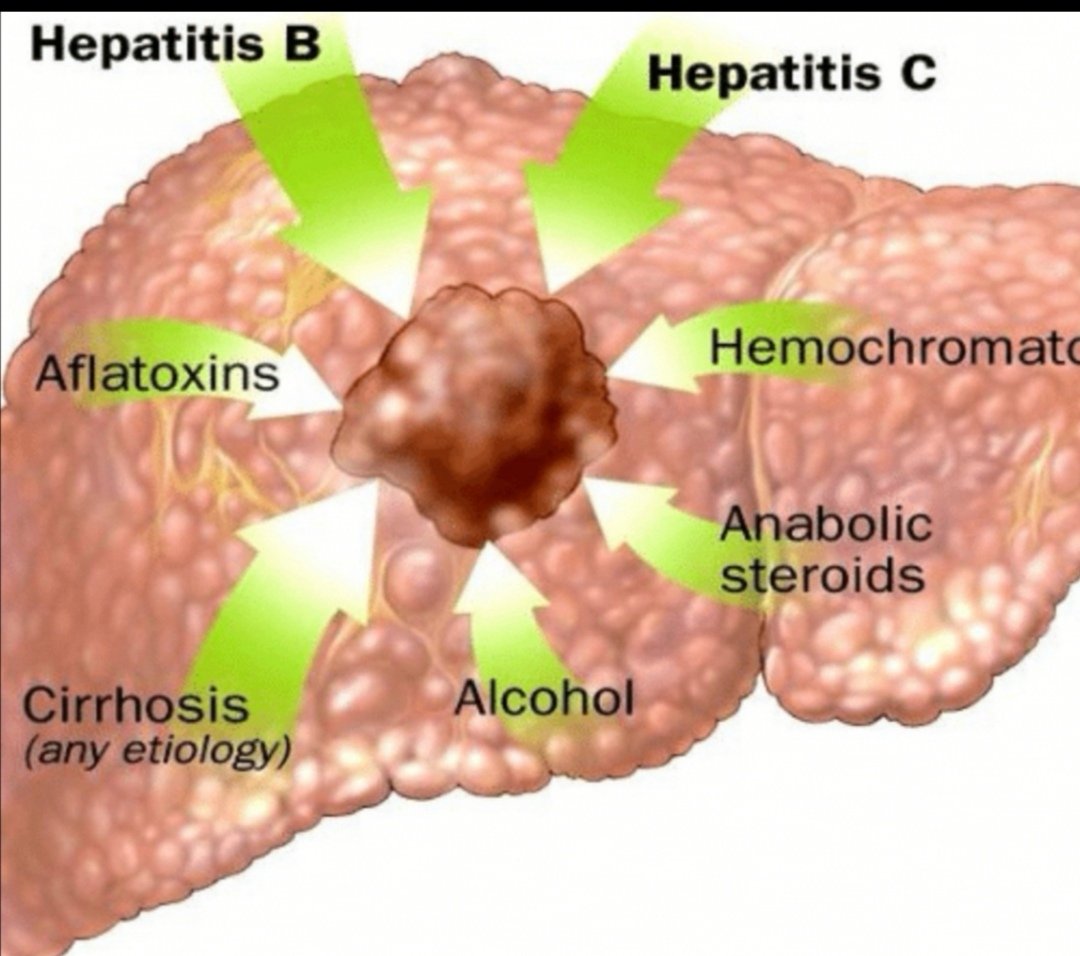
Liver Transplantation: A Last Resort for Cirrhosis
In cases of advanced cirrhosis where other treatments are no longer effective, liver transplantation may become necessary.
When is a liver transplant considered for cirrhosis patients?
A liver transplant is typically considered when:
- The liver is no longer able to function adequately
- Complications of cirrhosis become life-threatening
- The patient’s quality of life is severely impacted
- Other treatment options have been exhausted
The decision to perform a liver transplant is based on various factors, including the severity of liver disease, overall health status, and availability of donor organs.
What is the transplant process for cirrhosis patients?
The liver transplant process for cirrhosis patients involves several steps:
- Evaluation to determine suitability for transplant
- Placement on the transplant waiting list
- Waiting for a suitable donor organ
- The transplant surgery itself
- Post-transplant care and lifelong immunosuppression
At Mayo Clinic, the Liver Transplant Program has one of the highest success rates in the country, with experienced surgeons performing thousands of liver transplants.
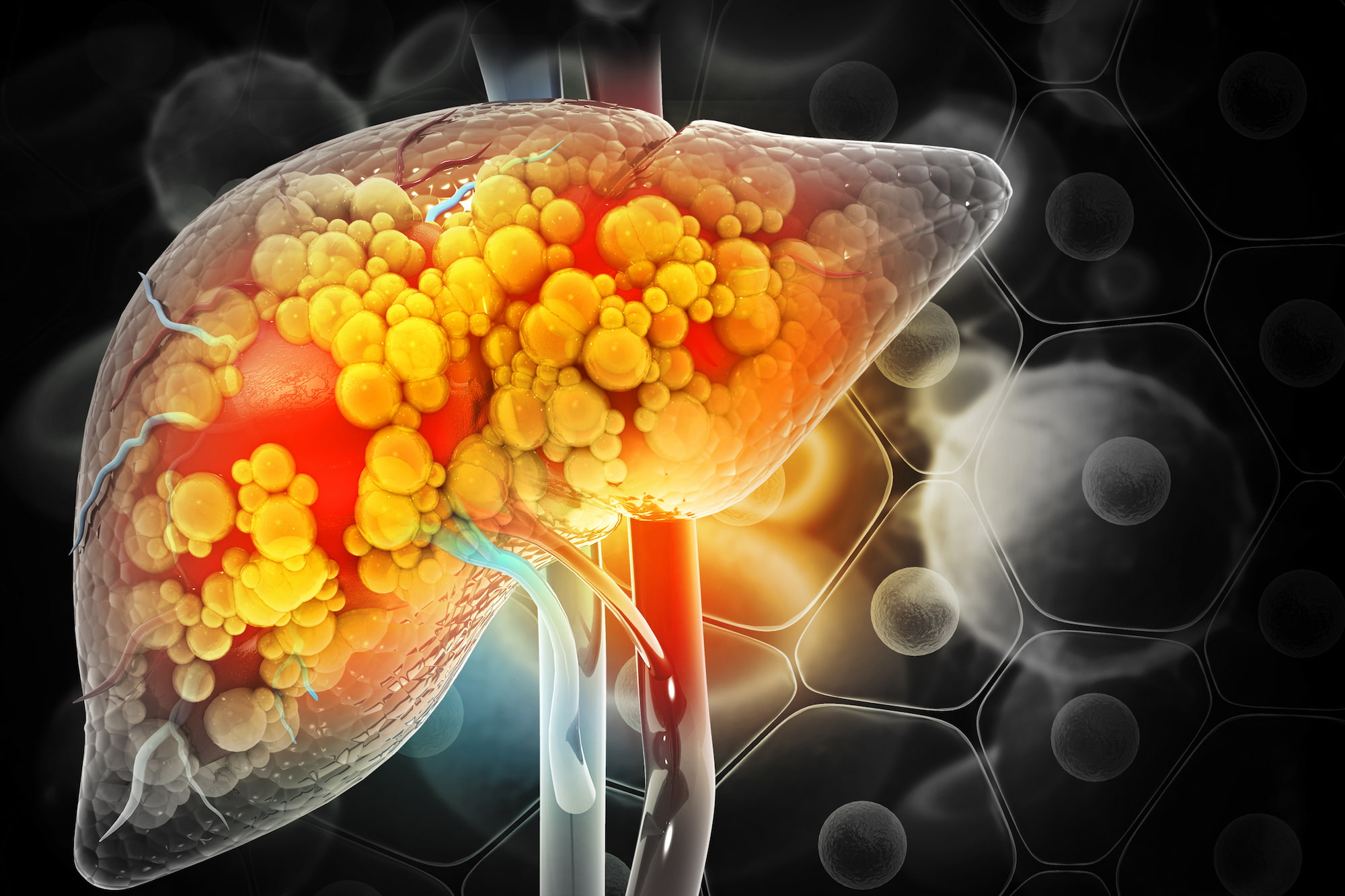
Research and Future Directions in Cirrhosis Treatment
Ongoing research continues to advance our understanding and treatment of cirrhosis.
What are some promising areas of research in cirrhosis treatment?
Current research in cirrhosis treatment focuses on several areas:
- Antifibrotic therapies to slow or reverse liver scarring
- Stem cell therapies to regenerate liver tissue
- Novel antiviral treatments for hepatitis B and C
- Improved management strategies for complications like portal hypertension
- Bioartificial liver devices to support liver function
Mayo Clinic researchers are at the forefront of many of these investigations, working to develop new treatments and improve outcomes for cirrhosis patients.
How might future treatments change the outlook for cirrhosis patients?
Future treatments for cirrhosis may offer hope for improved outcomes:
- Earlier detection and intervention through advanced imaging and biomarkers
- Personalized treatment plans based on genetic profiles
- Regenerative medicine approaches to restore liver function
- Improved organ preservation techniques to increase transplant opportunities
- Novel drug delivery systems for more effective therapies
As research progresses, the goal is to develop treatments that can not only manage cirrhosis more effectively but potentially reverse liver damage in earlier stages of the disease.
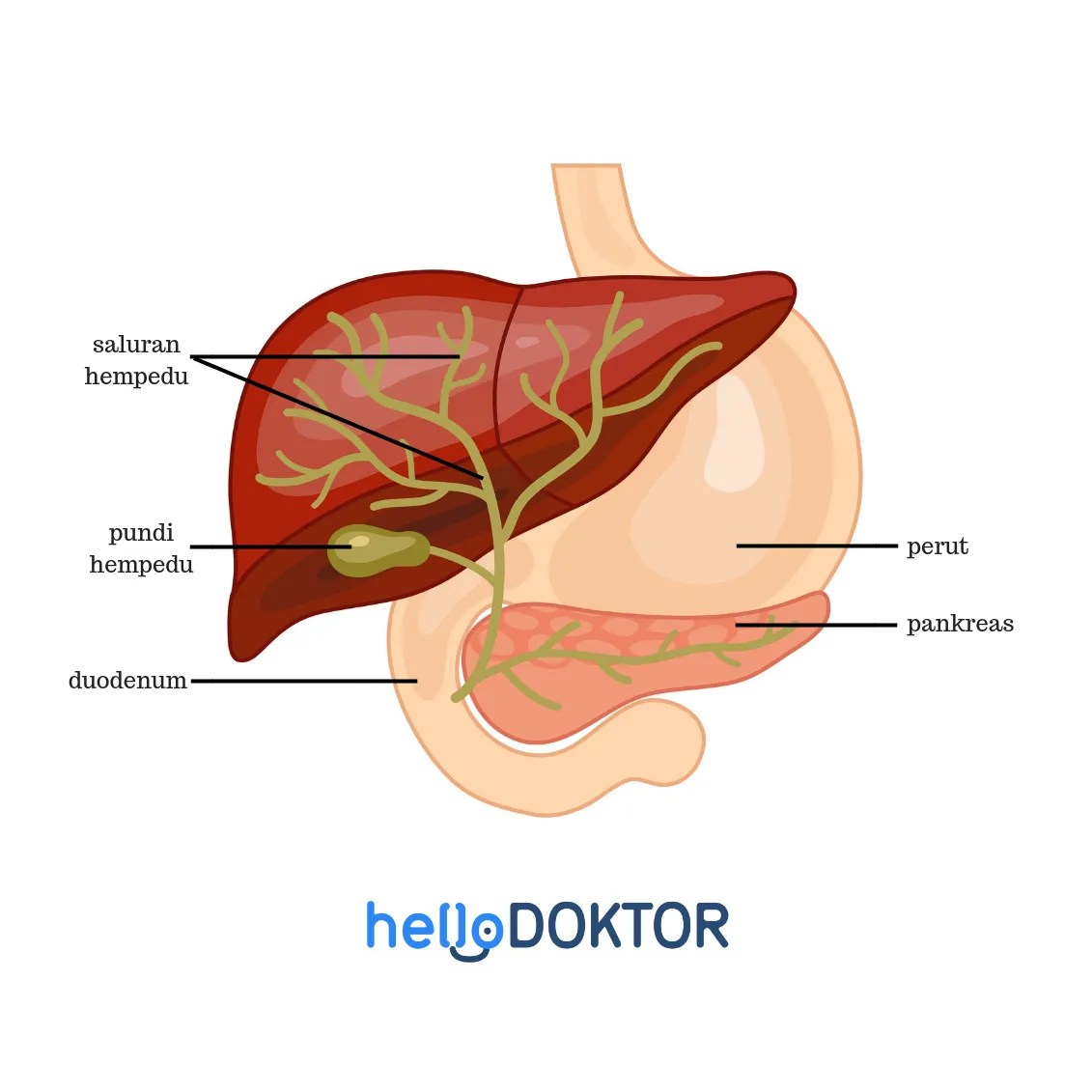
Cirrhosis remains a complex and challenging condition, but ongoing advancements in diagnosis, treatment, and research offer hope for improved outcomes. By understanding the impact of cirrhosis on the body, recognizing its symptoms, and adhering to treatment plans, patients can work with their healthcare providers to manage the condition effectively. For those facing advanced cirrhosis, liver transplantation provides a life-saving option, with centers like Mayo Clinic offering world-class care and expertise. As research continues to uncover new insights and treatment possibilities, the future holds promise for better management and potential breakthroughs in cirrhosis care.
Cirrhosis – Care at Mayo Clinic
Cirrhosis care at Mayo Clinic
Your Mayo Clinic care team
At Mayo Clinic, a multidisciplinary team of specialists work together to evaluate and treat each individual. With 13 specialty groups and more than 140 digestive disease specialists on staff, the Division of Gastroenterology and Hepatology at Mayo Clinic is one of the largest and most deeply experienced in the world.
Advanced diagnosis and treatment
Precise diagnosis and staging of cirrhosis is important to guiding treatment. Mayo Clinic researchers invented magnetic resonance elastography, a noninvasive test that maps hardening of the liver. This state-of-the-art imaging helps Mayo specialists find liver disease early, giving people the opportunity to start treatment sooner and helping to improve outcomes. People being treated at Mayo Clinic are also among the first to benefit from new findings made at Mayo.
Expertise and rankings
Experience
Mayo Clinic doctors have expertise and experience in evaluating and caring for people who have cirrhosis, treating more than 5,000 people every year for this chronic liver disorder. If a liver transplant is necessary, all Mayo campuses have transplant centers. Mayo surgeons have performed thousands of liver transplants, and the Mayo Clinic Liver Transplant Program has one of the best long-term survival rates in the country.
Pioneers in research
In addition to inventing technology to accurately diagnose cirrhosis, Mayo Clinic researchers developed the model for end-stage liver disease (MELD). This scoring system is now used nationwide to assess people’s disease progression and allocate organs for transplant.
Mayo Clinic in Rochester, Minn., ranks No. 1 for digestive disorders in the U.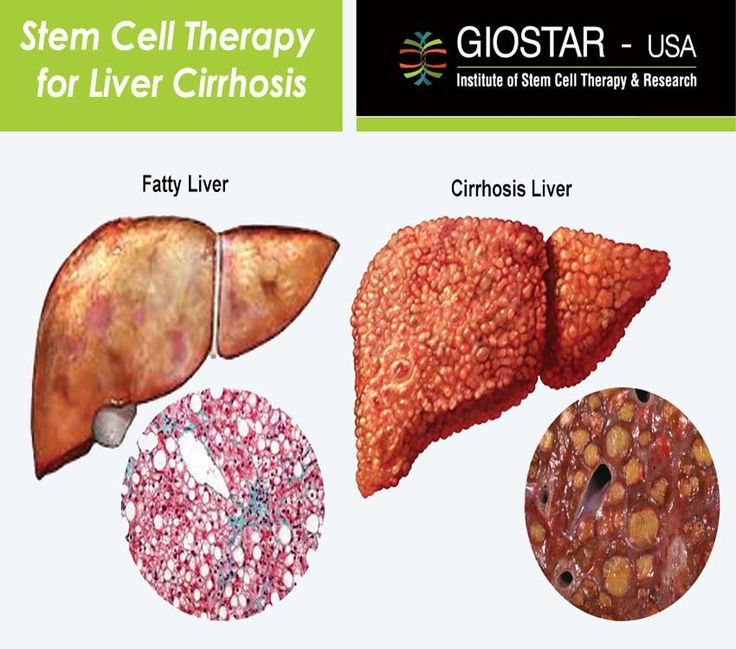 S. News & World Report Best Hospitals rankings. Mayo Clinic in Phoenix/Scottsdale, Ariz., and Mayo Clinic in Jacksonville, Fla., are ranked among the Best Hospitals for digestive disorders by U.S. News & World Report. Mayo Clinic Children’s Center in Rochester is ranked the No. 1 hospital in Minnesota, and the five-state region of Iowa, Minnesota, North Dakota, South Dakota and Wisconsin, according to U.S. News & World Report’s 2021-2022 “Best Children’s Hospitals” rankings.
S. News & World Report Best Hospitals rankings. Mayo Clinic in Phoenix/Scottsdale, Ariz., and Mayo Clinic in Jacksonville, Fla., are ranked among the Best Hospitals for digestive disorders by U.S. News & World Report. Mayo Clinic Children’s Center in Rochester is ranked the No. 1 hospital in Minnesota, and the five-state region of Iowa, Minnesota, North Dakota, South Dakota and Wisconsin, according to U.S. News & World Report’s 2021-2022 “Best Children’s Hospitals” rankings.
Locations, travel and lodging
Mayo Clinic has major campuses in Phoenix and Scottsdale, Arizona; Jacksonville, Florida; and Rochester, Minnesota. The Mayo Clinic Health System has dozens of locations in several states.
For more information on visiting Mayo Clinic, choose your location below:
Costs and insurance
Mayo Clinic works with hundreds of insurance companies and is an in-network provider for millions of people.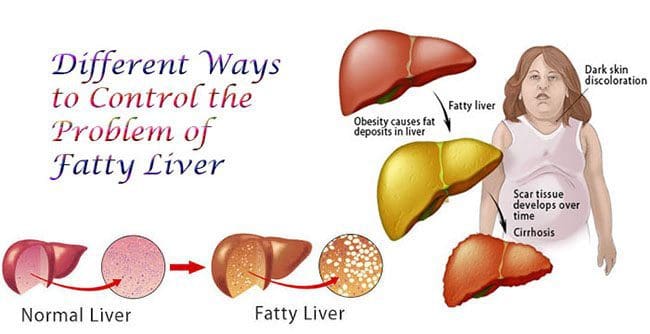
In most cases, Mayo Clinic doesn’t require a physician referral. Some insurers require referrals, or may have additional requirements for certain medical care. All appointments are prioritized on the basis of medical need.
Learn more about appointments at Mayo Clinic.
Please contact your insurance company to verify medical coverage and to obtain any needed authorization prior to your visit. Often, your insurer’s customer service number is printed on the back of your insurance card.
Get the latest health information from Mayo Clinic delivered to your inbox.
Subscribe for free and receive your in-depth guide to
digestive health, plus the latest on health innovations and news. You can unsubscribe at any
time.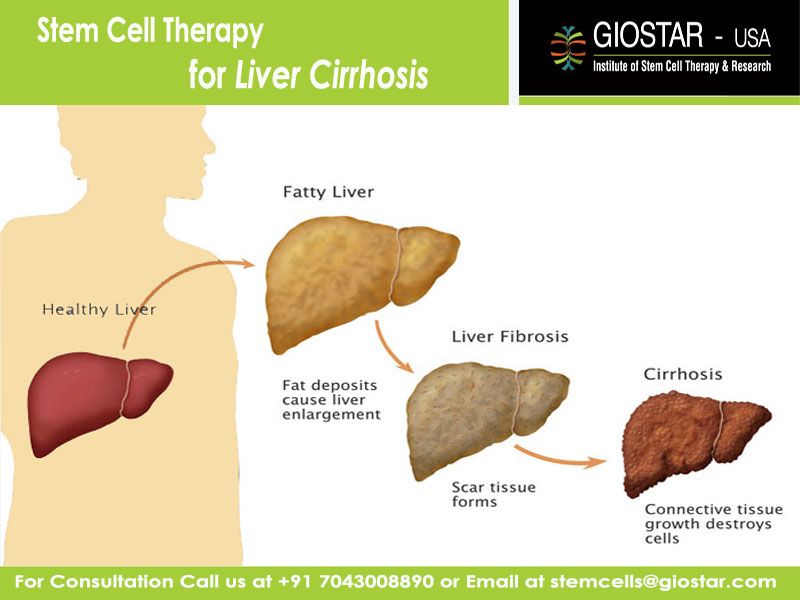
Subscribe
Learn more about Mayo Clinic’s use of data.
To provide you with the most relevant and helpful information, and understand which
information is beneficial, we may combine your email and website usage information with
other information we have about you. If you are a Mayo Clinic patient, this could
include protected health information. If we combine this information with your protected
health information, we will treat all of that information as protected health
information and will only use or disclose that information as set forth in our notice of
privacy practices. You may opt-out of email communications at any time by clicking on
You may opt-out of email communications at any time by clicking on
the unsubscribe link in the e-mail.
Thank you for subscribing
Your in-depth digestive health guide will be in your inbox shortly. You will also receive
emails from Mayo Clinic on the latest health news, research, and care.
If you don’t receive our email within 5 minutes, check your SPAM folder, then contact us
at [email protected].
Sorry something went wrong with your subscription
Please, try again in a couple of minutes
Retry
More information about billing and insurance:
Mayo Clinic in Arizona, Florida and Minnesota
Mayo Clinic Health System
Feb.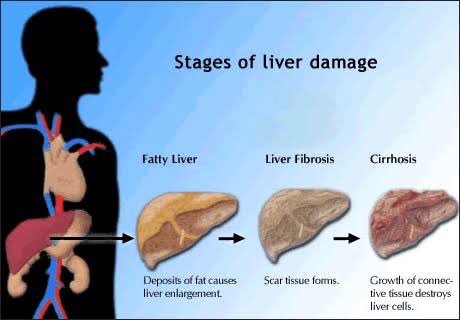 06, 2021
06, 2021
What is It, Symptoms, Causes & Stages
Overview
Cirrhosis causes scaring and nodules to form throughout the liver.
What is cirrhosis of the liver?
Cirrhosis is a late-stage liver disease in which healthy liver tissue is replaced with scar tissue and the liver is permanently damaged. Scar tissue keeps your liver from working properly.
Many types of liver diseases and conditions injure healthy liver cells, causing cell death and inflammation. This is followed by cell repair and finally tissue scarring as a result of the repair process.
The scar tissue blocks the flow of blood through the liver and slows the liver’s ability to process nutrients, hormones, drugs and natural toxins (poisons). It also reduces the production of proteins and other substances made by the liver. Cirrhosis eventually keeps the liver from working properly. Late-stage cirrhosis is life-threatening.
How common is cirrhosis?
Scientists estimate that cirrhosis of the liver affects about one in 400 adults in the U. S. It affects about 1 in 200 adults age 45 to 54, the age group most commonly affected by cirrhosis. Cirrhosis causes about 26,000 deaths each year in the U.S. and is the seventh leading cause of death in the U.S. among adults 25 to 64 years of age.
S. It affects about 1 in 200 adults age 45 to 54, the age group most commonly affected by cirrhosis. Cirrhosis causes about 26,000 deaths each year in the U.S. and is the seventh leading cause of death in the U.S. among adults 25 to 64 years of age.
Who gets cirrhosis, who is most at risk?
You are more likely to get cirrhosis of the liver if you:
- Abuse alcohol for many years.
- Have viral hepatitis.
- Have diabetes.
- Are obese.
- Inject drugs using shared needles.
- Have a history of liver disease.
- Have unprotected sex.
Is cirrhosis cancer?
No, cirrhosis of the liver isn’t cancer. However, most people who have liver cancer have cirrhosis. If you have cirrhosis, you have an increased risk of liver cancer. If you have hepatitis B or hepatitis C, you have an increased risk of liver cancer because these diseases often lead to cirrhosis. Any cause of liver disease can lead to cirrhosis, which increases your chance of liver cancer. (Even if you have hepatitis B or fatty liver disease without cirrhosis, you are at increased risk of liver cancer.)
(Even if you have hepatitis B or fatty liver disease without cirrhosis, you are at increased risk of liver cancer.)
Is cirrhosis a hereditary disease?
Cirrhosis itself is not an inherited (passed from parent to child) disease. However, some of the diseases that can cause liver damage that lead to cirrhosis are inherited diseases.
Can cirrhosis be reversed?
Generally no. If you have been told you have cirrhosis, you have a late-stage liver disease and the damage that is already done is permanent. There are many liver diseases and complications of liver diseases that can lead to cirrhosis. If your liver disease or complication is caught early and successfully managed, it may be possible to slow or stop the progression of disease.
Is cirrhosis fatal?
Having a diagnosis of cirrhosis of the liver doesn’t mean you have an immediately fatal condition. However, as cirrhosis continues, more scarring occurs and liver function continues to decline. Eventually, your failing liver may become a life-threatening condition. Yet there’s still hope. You and your medical team will discuss if you are a candidate for a liver transplant. If so, you will begin the process of being placed on a national liver transplant recipient list.
Yet there’s still hope. You and your medical team will discuss if you are a candidate for a liver transplant. If so, you will begin the process of being placed on a national liver transplant recipient list.
Symptoms and Causes
What are the symptoms of cirrhosis?
The symptoms of cirrhosis depend on the stage of your disease. In the beginning stages, you may not have any symptoms. If you do have symptoms, some are general and could easily be mistaken for symptoms of many other diseases and illnesses.
Early symptoms and signs of cirrhosis include:
As liver function gets worse, other more commonly recognized symptoms of cirrhosis appear including:
- Easy bruising and bleeding.
- Yellow tint to your skin or the whites of your eyes (jaundice).
- Itchy skin.
- Swelling (edema) in your legs, feet and ankles.
- Fluid buildup in your belly/abdomen (ascites).
- Brownish or orange color to your urine.
- Light-colored stools.

- Confusion, difficulty thinking, memory loss, personality changes.
- Blood in your stool.
- Redness in the palms of your hands.
- Spider-like blood vessels that surround small, red spots on your skin (telangiectasias).
- In men: loss of sex drive, enlarged breasts (gynecomastia), shrunken testicles.
- In women: premature menopause (no longer having your menstrual period).
Is cirrhosis painful?
Yes, cirrhosis can be painful, especially as the disease worsens. Pain is reported by up to 82% of people who have cirrhosis and more than half of these individuals say their pain is long-lasting (chronic).
Most people with liver disease report abdominal pain. Pain in your liver itself can feel like a dull throbbing pain or a stabbing sensation in your right upper abdomen just under your ribs. General abdominal pain and discomfort can also be related to swelling from fluid retention and enlargement of your spleen and liver caused by cirrhosis.
Pain can come both from the diseases that lead to cirrhosis and/or cirrhosis can make the pain from existing diseases worse. For instance, if you have non-alcoholic fatty liver disease and are obese, you may also have osteoarthritis and cirrhosis makes your bone and joint pain worse. Cirrhosis also causes an inflammatory state in your entire body. Inflammation and your body’s reaction to inflammation can cause general pain.
What causes cirrhosis?
The most common causes of cirrhosis of the liver are:
- Alcohol abuse (alcohol-related liver disease caused by long-term [chronic] use of alcohol).
- Chronic viral infections of the liver (hepatitis B and hepatitis C).
- Fatty liver associated with obesity and diabetes and not alcohol. This condition is called non-alcoholic steatohepatitis.
Anything that damages the liver can lead to cirrhosis. Other causes include:
- Inherited diseases:
- Autoimmune hepatitis (your body’s own immune system attacks healthy liver tissue causing damage).

- Diseases that damage or block bile ducts in the liver (tubes that carry bile from the liver to other parts of digestive system; bile helps digest fats):
- Primary biliary cholangitis (bile ducts become injured, then inflamed, then permanently damaged).
- Primary sclerosing cholangitis (inflammation of the bile ducts leads to scarring and narrowing of the ducts and buildup of bile in the liver).
- Blocked bile duct (can cause infections, backup of products in the liver).
- Biliary atresia (infants are born with poorly formed or blocked bile ducts, causing damage, scarring, loss of liver tissue and cirrhosis).
- Chronic heart failure (causes fluid to back up in your liver, swelling in other areas of your body and other symptoms).
- Rare diseases, such as amyloidosis, in which abnormal deposits in the liver of an abnormal protein called amyloid disrupts normal liver function.
Changes from liver diseases that lead to cirrhosis are gradual. Liver cells are injured and if injury – from whatever cause – continues, liver cells start to die. Over time, scar tissue replaces the damaged liver cells and the liver can’t function properly.
Liver cells are injured and if injury – from whatever cause – continues, liver cells start to die. Over time, scar tissue replaces the damaged liver cells and the liver can’t function properly.
What are the complications of cirrhosis?
There are many complications of cirrhosis of the liver. Because cirrhosis develops over many years, some of these complications may be your first noticeable signs and symptoms of the disease.
Portal hypertension: This is the most common serious complication. Portal hypertension is an increase in the pressure in your portal vein (the large blood vessel that carries blood from the digestive organs to the liver). This increase in pressure is caused by a blockage of blood flow through your liver as a result of cirrhosis. When blood flow through veins is partially blocked, veins in your esophagus, stomach or intestines can become enlarged (a condition called varices). As the pressure in these veins builds, the veins can bleed or even burst, causing severe internal bleeding.
Additional complications of portal hypertension include:
- Swelling (edema) in your legs, ankles or feet.
- Buildup of fluids in your abdomen (called ascites).
- Swelling/enlargement of your spleen (splenomegaly).
- Formation and dilation (expansion) of blood vessels in the lungs (hepatopulmonary syndrome), leading to low levels of oxygen in the blood and body and shortness of breath.
- Failure of kidney function as a result of having portal hypertension as a complication of cirrhosis (hepatorenal syndrome). This is a type of kidney failure.
- Confusion, difficulty thinking, changes in your behavior, even coma. This occur when toxins from your intestines aren’t removed by your damaged liver and circulate in the bloodstream and buildup in your brain (a condition called hepatic encephalopathy).
Hypersplenism: Hypersplenism is an overactive spleen. This condition causes quick and premature destruction of blood cells.
Infections: Cirrhosis increases your risk of getting and fighting serious infections, such as bacterial peritonitis (infection of the tissue that lines the inner wall of your abdomen).
Malnutrition: Your liver processes nutrients. A damaged liver makes this more difficult and leads to weight loss and general weakness.
Liver cancer: Most people who develop liver cancer have cirrhosis of the liver.
Liver failure: Many diseases and conditions cause liver failure including cirrhosis of the liver. As its name implies, liver failure occurs when your liver isn’t working well enough to perform its many functions.
Diagnosis and Tests
How is cirrhosis of the liver diagnosed?
Your healthcare provider will first ask about your medical history and over-the-counter and prescription drug use. They will also ask about any supplements or herbal products you may take. Your provider may suspect you have cirrhosis if you have a long history of alcohol abuse, injectable drug abuse or have had hepatitis B or C and have the symptoms listed in this article.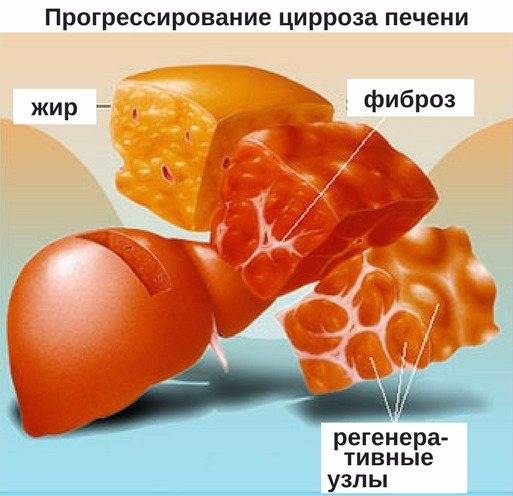
To diagnosis cirrhosis, your provider will perform a physical exam and may order one or more of the following tests:
- Physical exam: Your doctor will examine you, looking for the signs and symptoms of cirrhosis including: the red, spider-like blood vessels on your skin; yellowing of your skin or whites of your eyes; bruises on your skin; redness on your palms; swelling, tenderness or pain in your abdomen; enlarged firmer-feeling, bumpy texture to the lower edge of your liver (the part of your liver below the rib cage that can be felt).
- Blood tests: If your doctor suspects cirrhosis, your blood will be checked for signs of liver disease. Signs of liver damage include:
- Lower than normal levels of albumin and blood clotting factors (lower levels means your liver has lost its ability to make these proteins).
- Raised levels of liver enzymes (suggests inflammation).
- Higher level of iron (may indicate hemochromatosis).

- Presence of autoantibodies (may indicate autoimmune hepatitis or primary biliary cirrhosis).
- Raised bilirubin level (suggests liver isn’t working properly to remove bilirubin from the blood).
- High white blood cell count (indicates an infection).
- High creatinine level (a sign of kidney disease that suggests late-stage cirrhosis).
- Lower levels of sodium (is an indicator of cirrhosis).
- Raised level of alpha-fetoprotein (indicates presence of liver cancer).
In addition, other blood work will include a complete blood count to look for signs of infection and anemia caused by internal bleeding and a viral hepatitis test to check for hepatitis B or C.
- Imaging tests: Imaging test show the size, shape and texture of the liver. These tests can also determine the amount of scarring, the amount of fat you have in your liver and fluid in your abdomen. Imaging tests of your liver that could be ordered include computerized tomography (CT) scan, abdominal ultrasound and magnetic resonance imaging (MRI).
 A special ultrasound, called a transient elastography, measures the fat content and amount of stiffness in your liver. Two different types of endoscopies might be ordered: an endoscopic retrograde cholangiopancreatography to detect bile duct problems, and/or upper endoscopy to detect enlarged veins (varices) or bleeding in your esophagus, stomach or intestines.
A special ultrasound, called a transient elastography, measures the fat content and amount of stiffness in your liver. Two different types of endoscopies might be ordered: an endoscopic retrograde cholangiopancreatography to detect bile duct problems, and/or upper endoscopy to detect enlarged veins (varices) or bleeding in your esophagus, stomach or intestines. - Biopsy: A sample of liver tissue (biopsy) is removed from your liver and examined under the microscope. A liver biopsy can confirm a diagnosis of cirrhosis, determine other causes or extent of liver damage or enlargement or diagnosis liver cancer.
Are there stages of cirrhosis?
If you have been diagnosed with cirrhosis of the liver, you are already beyond the early stages of liver disease. Having cirrhosis means your liver has scar tissue in it because it has been damaged.
Liver specialists and researchers have developed many different scoring systems to predict outcome and to guide treatment for chronic liver disease.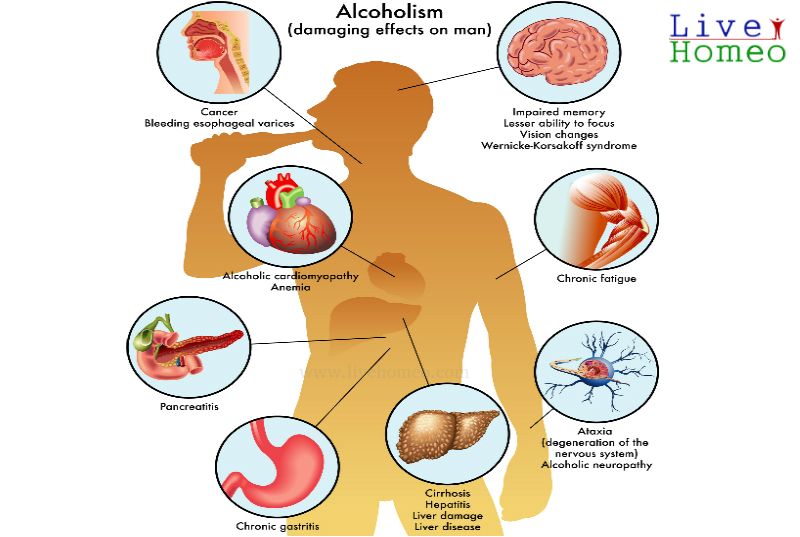 Some specific liver diseases also have their own scoring systems. However, not every liver disease has a scoring system and there’s no scoring system if you happen to have more than one liver disease at the same time.
Some specific liver diseases also have their own scoring systems. However, not every liver disease has a scoring system and there’s no scoring system if you happen to have more than one liver disease at the same time.
For these reasons, perhaps it’s easier to talk about cirrhosis according to a classification system you are more likely to hear from your healthcare provider. He or she may refer to you having either compensated cirrhosis or decompensated cirrhosis.
Compensated cirrhosis means you have cirrhosis but you don’t yet have noticeable symptoms (you are asymptomatic). Your lab work and imaging findings may not be abnormal. A liver biopsy may be the only way to confirm a diagnosis of cirrhosis. Median survival in patients with compensated cirrhosis is approximately nine to 12 years. (Median is the middle point in set of numbers, so an equal number of individuals survived less than 9 to 12 years as the number of individuals who survived over this time range. )
)
Decompensated cirrhosis means your cirrhosis has worsened to the point that you have noticeable symptoms. Your healthcare provider recognizes your condition based on your history, physical and lab findings. You have at least one complication, which includes jaundice, ascites, hepatic encephalopathy, hepatorenal syndrome, variceal bleeding or liver cancer. You are usually admitted to the hospital for care. Median survival in patients with decompensated cirrhosis is approximately two years.
Management and Treatment
Is there a cure for cirrhosis of the liver?
No, there is no cure for cirrhosis. The damage already done to your liver is permanent. However, depending on the underlying cause of your cirrhosis, there may be actions you can take to keep your cirrhosis from getting worse. These actions include:
- Stop drinking alcohol.
- Treat chronic hepatitis (if you have it).
- Avoid medications that stress the liver.

- Eat a healthy, well-balanced, low-fat diet, such as the Mediterranean diet.
Follow other tips listed under the Prevention section in this article.
What are the goals of cirrhosis treatment?
The goals of treatment for cirrhosis of the liver are to:
- Slow further damage to your liver.
- Prevent and treat symptoms.
- Prevent and treat complications.
How is cirrhosis of the liver treated?
Treatment depends on what’s causing your cirrhosis and how much damage exists.
Although there is no cure for cirrhosis, treatments can delay or stop its progress and reduce complications.
Treatments for the causes of cirrhosis are as follows:
- Alcohol-related liver disease: If you’ve developed cirrhosis from alcohol abuse, stop drinking alcohol. If you need help, ask your healthcare provider for recommendations for alcohol addiction treatment programs.
- Hepatitis B or C: Several approved antiviral medications are available to treat hepatitis types B and C.

- Nonalcoholic fatty liver disease: Management of nonalcoholic fatty liver disease includes losing weight, following a healthy diet, getting physical exercise and following your provider’s instructions for managing your diabetes.
- Inherited liver diseases: Treatment depends on the specific inherited disease. Treatments are aimed at treating symptoms and managing complications. Treatment of alpha-1 antitrypsin deficiency may include medicine to reduce swelling in your abdomen and legs, antibiotics to treat infections and other medicines for complications. For hemochromatosis, treatment is to remove blood to reduce the level of iron in your blood. For Wilson disease, treatment is medicines to remove copper from your body and zinc to prevent absorption of cooper. For cystic fibrosis, medications are prescribed to improve lung function, methods to clear mucous and treatment of complications. Treatment for glycogen storage diseases that involve the liver is to keep glucose at the right level.

- Autoimmune hepatitis: Treatment includes medications to suppress your immune system.
- Diseases that damage or block bile ducts in the liver: Treatments include medications such as ursodiol (Actigall®) or surgery to open narrowed or blocked bile ducts.
- Heart failure: Treatment depends on the cause and stage of your heart failure. Medications include drugs to treat high blood pressure, reduce cholesterol, remove excess fluids (edema) from your body and improve heart pumping function. Other treatments include implantation of devices to help pump blood or monitor heart rhythm, surgeries to unblock arteries or replace or repair heart valves and transplant surgery to replace your heart.
- Medications that may be contributing to cirrhosis: Your provider will review all of your medications to determine if any are causing problems for your liver and if so, stop the drug, lower the dosage or change to a different drug if possible.

How are the complications of cirrhosis treated?
Portal hypertension: Portal hypertension is mainly the result of chronic end-stage liver disease. Treatment consists of treating its many complications. Treatments of portal hypertension include:
- Giving beta blockers or nitrates to lower blood pressure in your veins.
- Cutting off blood flow through the varices to stop or reduce further bleeding with procedure using tiny elastic bands (band ligation) or with sclerotherapy.
- Redirecting blood from the portal vein to reduce pressure in the portal vein and to control variceal bleeding. This is achieved using either one of two techniques – distal splenorenal shunt or transjugular intrahepatic portosystemic shunt.
- Prescribing lactulose to absorb toxins in the blood that result from hepatic encephalopathy, which cause symptoms including confusion and other mental changes.
- Draining excess fluid in your abdomen (ascites) in a procedure called paracentesis or taking a diuretic medication to decrease extra fluids (edema) in your legs and other areas of your body.

Bacterial peritonitis: Antibiotics and infusion of a protein (albumin) will be prescribed. Typically patients are admitted to the hospital for treatment and monitoring. Following a diagnosis of bacterial peritonitis, an oral antibiotic will be prescribed for daily use to prevent recurrence of infection.
Liver cancer: Treatment depends on the stage of your cancer and other factors. One or more treatments may be tried. Options include surgery to remove part of your liver or your whole liver (to be replaced with a new liver as part of a liver transplantation) and nonsurgical tumor-destroying methods including ablation, chemotherapy, targeted therapy (drugs zero in on cancer genes or tissue), immunotherapy and radiation bead therapy (inject bead that give off radiation into the blood vessels that feed the tumor).
Kidney failure: Treatment may include medication, dialysis and kidney transplant, depending on the cause and extent of failure.
Liver failure: Treatment depends on if you have acute or chronic failure. For chronic liver failure, diet and lifestyle changes include stopping alcohol and medications that harm the liver; eating less red meat, cheese and eggs; losing weight; controlling high blood pressure and diabetes and cutting down on salt.
Acute treatments for liver failure include intravenous fluids to maintain blood pressure, laxatives to help flush toxins from the body and blood glucose monitoring.
If you have either acute or chronic liver failure, your liver specialist may recommend a liver transplant. Liver transplants can come from a living or deceased donor. Only a portion of the donor liver needs to be transplanted. The liver is the only human organ capable of growing back.
Many tests are required of both you (the liver transplant recipient) and the person donating a portion of their liver or the cadaver liver (liver from a deceased person). If your doctors determine that you need a liver transplant, you will be placed on a national liver transplant waiting list, which lists patients by blood type, body size and severity of end-stage liver disease.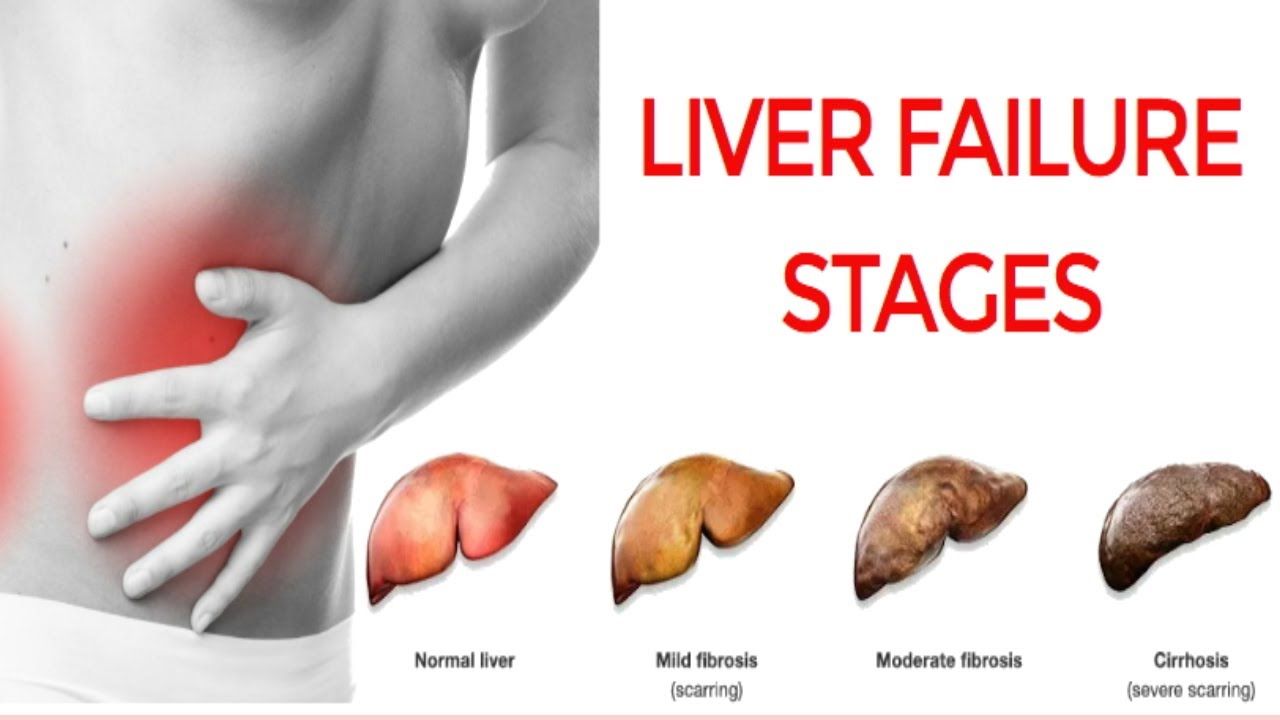
Prevention
How can I prevent cirrhosis of the liver?
Food and drink issues:
- Don’t abuse alcohol. If you do drink alcohol, limit how much you drink and how often. If you drink more than two drinks a day if you are a man or more than one if you are a woman, you are increasing your risk. A drink is a glass of wine or a 12-ounce can of beer or a 1.5 ounce serving of hard liquor. If you have liver disease, you should not drink alcohol at all.
- Eat a well-balanced, low-fat diet, such as the Mediterranean diet. A well-balanced healthy diet consists of fruits, vegetables, lean proteins and whole grains.
- Don’t eat raw seafood, especially oysters and clams. These foods can contain a bacteria that can cause serious illness.
- Cut back on the amount of salt in your diet. Use other seasonings to flavor your foods.
Healthy body habits:
- Maintain a healthy weight. Excess body fat can damage your liver. Ask your healthcare provider for a weight loss plan if you are overweight.

- Exercise regularly.
- See your healthcare provider regularly for check-ups. Follow medical recommendations to control obesity, diabetes, hypertension (high blood pressure) and cholesterol (high bad cholesterol [LDL] and/or low good cholesterol [HDL]) and high triglycerides.
- Quit smoking if you smoke.
Healthy liver practices:
- Avoid high-risk behaviors that can lead to infection with hepatitis B or C, such as sharing needles for illegal drug use or having unprotected sex.
- Get vaccinated against hepatitis B. If you already have hepatitis, ask your provider if drug treatment is appropriate for you.
- Get your annual flu shot and ask if a pneumonia vaccine makes sense for you (people with cirrhosis are more likely to get infections).
- Avoid nonsteroidal anti-inflammatory drugs (such as ibuprofen [Advil®, Motrin®] indomethacin [Indocin®] celecoxib [Celebrex®] and aspirin) and high doses of acetaminophen (Tylenol®). Acetaminophen can be taken safely at a dose up to 2,000 mg daily.
 These drugs can cause or worsen liver function.
These drugs can cause or worsen liver function. - Take all medications and keep all appointments as recommended by your healthcare provider.
Outlook / Prognosis
What can I expect if I have cirrhosis?
Damage already done to your liver is permanent. But your liver is a large organ. If part of your liver is still working, you might be able to slow the progression of disease, depending on its cause. For instance, if your cirrhosis is caused by alcohol abuse, you need to stop drinking immediately. If you are obese or have diabetes, you will need to lose weight and manage your blood sugar so you can lower the damage caused by fatty liver disease.
You and your healthcare provider or team will work together to determine what’s causing your cirrhosis and what complications may have resulted from your cirrhosis and treat them accordingly.
What’s the life expectancy for people with cirrhosis?
Life expectancy depends on several factors including the cause and severity of your cirrhosis, your response to treatments, presence of cirrhosis complications, your age and any other existing general health problems. Ask your liver specialist about your life expectancy since every person is unique, with unique overall health issues and specific liver health issues.
Ask your liver specialist about your life expectancy since every person is unique, with unique overall health issues and specific liver health issues.
If your cirrhosis is advanced, liver transplantation may be an option. You and your doctors will discuss if this is an option for you.
What’s a Child-Turcotte-Pugh score and MELD score?
A Child-Turcotte-Pugh (CTP) score, also known simply as the Child-Pugh score, is a clinical score that tells your doctors how severe your liver disease is and forecasts your expected survival rate. The scoring system provides a score on the presence of five clinical measures (the lab values of bilirubin, serum albumin and prothrombin time; presence of ascites and hepatic encephalopathy) and the degree of severity of each of these measures.
| Child-Turcotte-Pugh Score | ||
|---|---|---|
| Class Status | Severity of Liver Disease | Two-Year Survival Rate |
| Class A | Mild | 85% |
| Class B | Moderate | 60% |
| Class C | Severe | 35% |
The Model for End-stage Liver Disease (MELD) score is a score that is used to rank the urgency for a liver transplant. The worse your liver function is, the higher your MELD score and the higher your position is on the transplant list. The Pediatric End-stage Liver Disease (PELD) score is similar to MELD but is a scoring system for children under the age of 12.
The worse your liver function is, the higher your MELD score and the higher your position is on the transplant list. The Pediatric End-stage Liver Disease (PELD) score is similar to MELD but is a scoring system for children under the age of 12.
Living With
When should I call 911 or go to the emergency room?
If you have cirrhosis and experience the following, call 911:
- Your poop (stools) are black and tarry or contain blood (may be maroon or bright red in color).
- You are vomiting blood.
- The whites of your eyes are turning yellow.
- You have difficulty breathing.
- You have abdominal swelling.
- You have muscle tremors or shakiness.
- You are confused, irritable, disoriented, sleepy, forgetful or “foggy.”
- You have a change in your level of consciousness or alertness; you pass out.
What type of healthcare providers will treat my cirrhosis?
Depending on the stage of your cirrhosis, different healthcare providers may be involved in your care. Healthcare professionals likely to be part of your care team include:
Healthcare professionals likely to be part of your care team include:
- Your primary care provider.
- Gastroenterologist (doctor who specializes in conditions of your digestive tract).
- Hepatologist (doctor who specializes in conditions of your liver).
- Nephrologist (doctor who specializes in conditions of your kidney).
- Dietitian.
- Members of a liver transplant team include: hepatologist, transplant surgeon, anesthesiologist, infectious disease specialist, nephrologist, dietitian, transplant pharmacist, physical and occupational therapist, case manager/social worker and nurses.
A note from Cleveland Clinic
Cirrhosis of the liver is a late-stage result of liver disease and its complications. Cirrhosis causes your liver to not function properly. Your liver plays a vital role in many of the processes and functions that keep you alive.
Although scarring from liver disease causes permanent damage, it’s still possible to live a long life.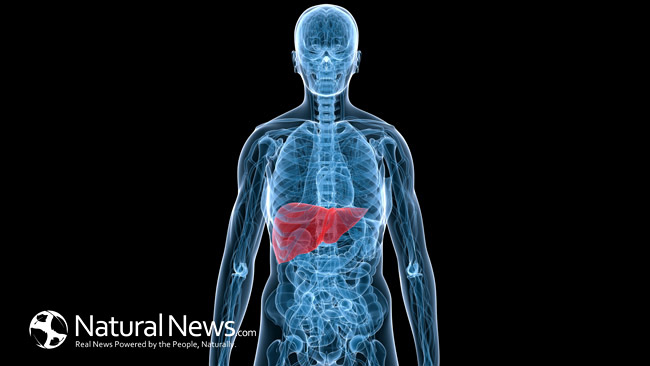 Depending on the underlying cause, it’s possible to slow or stop cirrhosis from worsening. Many of the causes and complications that lead to cirrhosis are treatable or manageable. If you drink alcohol, stop. If you have nonalcoholic fatty liver disease, lose weight and control your metabolic risk factors. If you have diabetes, make sure you are following your healthcare provider’s management recommendations. Take all medications for all your medical conditions as directed by your healthcare team. Get vaccinated for hepatitis A and B.
Depending on the underlying cause, it’s possible to slow or stop cirrhosis from worsening. Many of the causes and complications that lead to cirrhosis are treatable or manageable. If you drink alcohol, stop. If you have nonalcoholic fatty liver disease, lose weight and control your metabolic risk factors. If you have diabetes, make sure you are following your healthcare provider’s management recommendations. Take all medications for all your medical conditions as directed by your healthcare team. Get vaccinated for hepatitis A and B.
If you have end-stage cirrhosis, don’t lose hope. You and your healthcare team will work together to closely manage your condition and put you on a wait list for a donor liver.
What is It, Symptoms, Causes & Stages
Overview
Cirrhosis causes scaring and nodules to form throughout the liver.
What is cirrhosis of the liver?
Cirrhosis is a late-stage liver disease in which healthy liver tissue is replaced with scar tissue and the liver is permanently damaged. Scar tissue keeps your liver from working properly.
Scar tissue keeps your liver from working properly.
Many types of liver diseases and conditions injure healthy liver cells, causing cell death and inflammation. This is followed by cell repair and finally tissue scarring as a result of the repair process.
The scar tissue blocks the flow of blood through the liver and slows the liver’s ability to process nutrients, hormones, drugs and natural toxins (poisons). It also reduces the production of proteins and other substances made by the liver. Cirrhosis eventually keeps the liver from working properly. Late-stage cirrhosis is life-threatening.
How common is cirrhosis?
Scientists estimate that cirrhosis of the liver affects about one in 400 adults in the U.S. It affects about 1 in 200 adults age 45 to 54, the age group most commonly affected by cirrhosis. Cirrhosis causes about 26,000 deaths each year in the U.S. and is the seventh leading cause of death in the U.S. among adults 25 to 64 years of age.
Who gets cirrhosis, who is most at risk?
You are more likely to get cirrhosis of the liver if you:
- Abuse alcohol for many years.

- Have viral hepatitis.
- Have diabetes.
- Are obese.
- Inject drugs using shared needles.
- Have a history of liver disease.
- Have unprotected sex.
Is cirrhosis cancer?
No, cirrhosis of the liver isn’t cancer. However, most people who have liver cancer have cirrhosis. If you have cirrhosis, you have an increased risk of liver cancer. If you have hepatitis B or hepatitis C, you have an increased risk of liver cancer because these diseases often lead to cirrhosis. Any cause of liver disease can lead to cirrhosis, which increases your chance of liver cancer. (Even if you have hepatitis B or fatty liver disease without cirrhosis, you are at increased risk of liver cancer.)
Is cirrhosis a hereditary disease?
Cirrhosis itself is not an inherited (passed from parent to child) disease. However, some of the diseases that can cause liver damage that lead to cirrhosis are inherited diseases.
Can cirrhosis be reversed?
Generally no.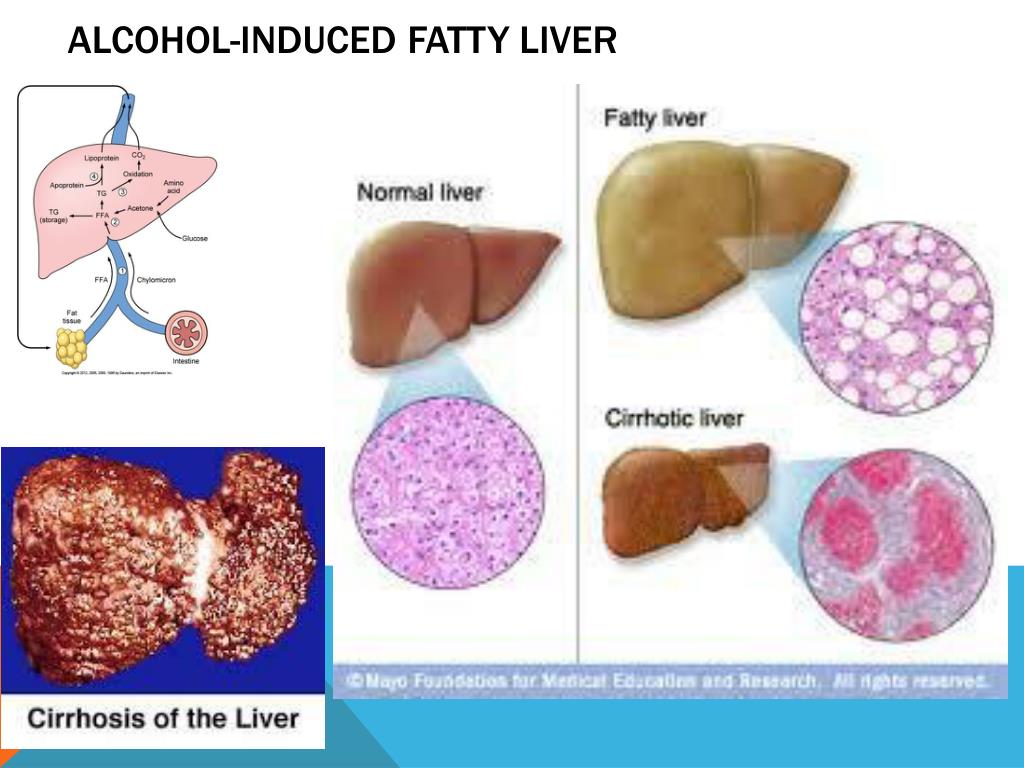 If you have been told you have cirrhosis, you have a late-stage liver disease and the damage that is already done is permanent. There are many liver diseases and complications of liver diseases that can lead to cirrhosis. If your liver disease or complication is caught early and successfully managed, it may be possible to slow or stop the progression of disease.
If you have been told you have cirrhosis, you have a late-stage liver disease and the damage that is already done is permanent. There are many liver diseases and complications of liver diseases that can lead to cirrhosis. If your liver disease or complication is caught early and successfully managed, it may be possible to slow or stop the progression of disease.
Is cirrhosis fatal?
Having a diagnosis of cirrhosis of the liver doesn’t mean you have an immediately fatal condition. However, as cirrhosis continues, more scarring occurs and liver function continues to decline. Eventually, your failing liver may become a life-threatening condition. Yet there’s still hope. You and your medical team will discuss if you are a candidate for a liver transplant. If so, you will begin the process of being placed on a national liver transplant recipient list.
Symptoms and Causes
What are the symptoms of cirrhosis?
The symptoms of cirrhosis depend on the stage of your disease.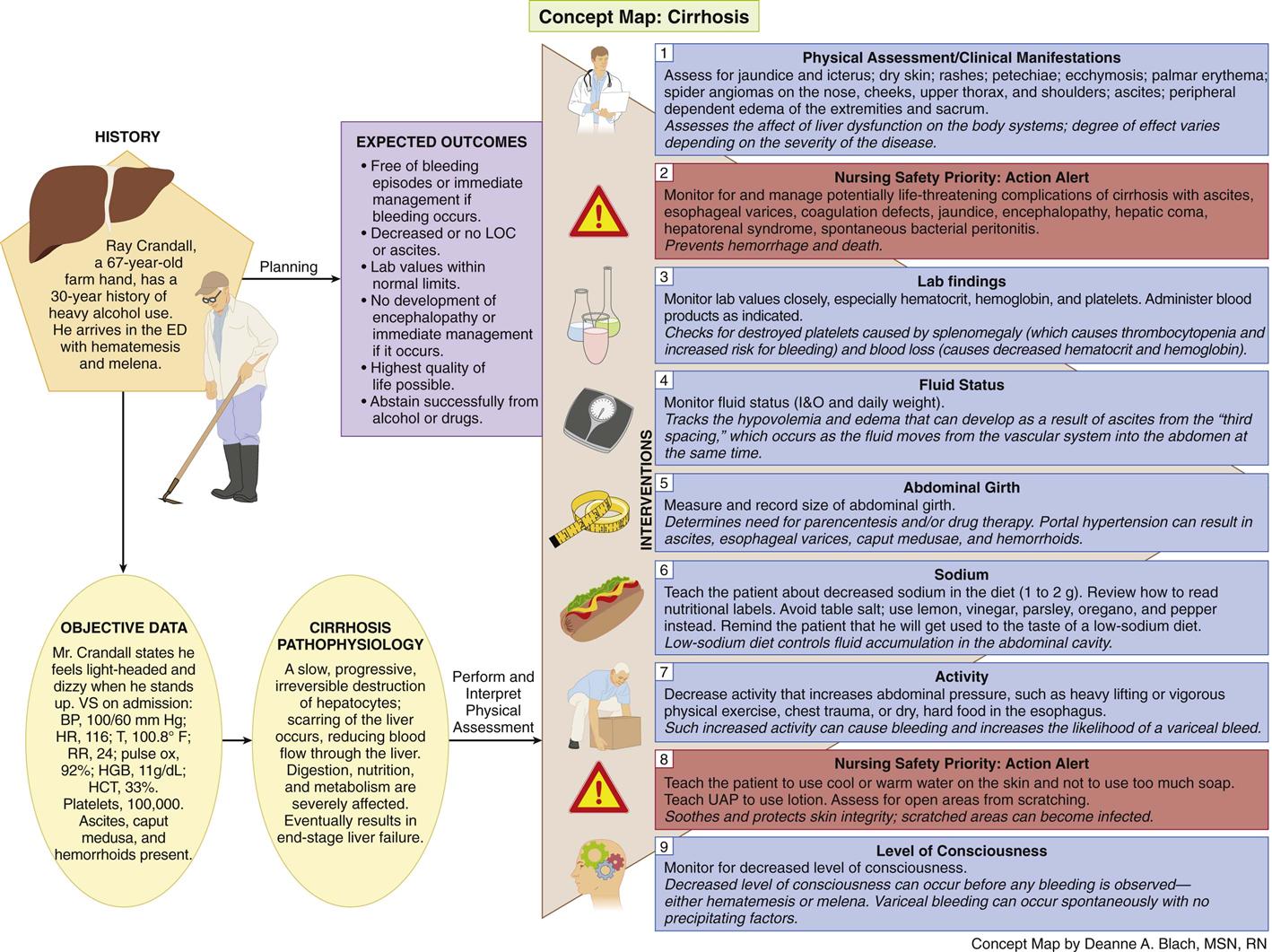 In the beginning stages, you may not have any symptoms. If you do have symptoms, some are general and could easily be mistaken for symptoms of many other diseases and illnesses.
In the beginning stages, you may not have any symptoms. If you do have symptoms, some are general and could easily be mistaken for symptoms of many other diseases and illnesses.
Early symptoms and signs of cirrhosis include:
As liver function gets worse, other more commonly recognized symptoms of cirrhosis appear including:
- Easy bruising and bleeding.
- Yellow tint to your skin or the whites of your eyes (jaundice).
- Itchy skin.
- Swelling (edema) in your legs, feet and ankles.
- Fluid buildup in your belly/abdomen (ascites).
- Brownish or orange color to your urine.
- Light-colored stools.
- Confusion, difficulty thinking, memory loss, personality changes.
- Blood in your stool.
- Redness in the palms of your hands.
- Spider-like blood vessels that surround small, red spots on your skin (telangiectasias).
- In men: loss of sex drive, enlarged breasts (gynecomastia), shrunken testicles.

- In women: premature menopause (no longer having your menstrual period).
Is cirrhosis painful?
Yes, cirrhosis can be painful, especially as the disease worsens. Pain is reported by up to 82% of people who have cirrhosis and more than half of these individuals say their pain is long-lasting (chronic).
Most people with liver disease report abdominal pain. Pain in your liver itself can feel like a dull throbbing pain or a stabbing sensation in your right upper abdomen just under your ribs. General abdominal pain and discomfort can also be related to swelling from fluid retention and enlargement of your spleen and liver caused by cirrhosis.
Pain can come both from the diseases that lead to cirrhosis and/or cirrhosis can make the pain from existing diseases worse. For instance, if you have non-alcoholic fatty liver disease and are obese, you may also have osteoarthritis and cirrhosis makes your bone and joint pain worse. Cirrhosis also causes an inflammatory state in your entire body. Inflammation and your body’s reaction to inflammation can cause general pain.
Inflammation and your body’s reaction to inflammation can cause general pain.
What causes cirrhosis?
The most common causes of cirrhosis of the liver are:
- Alcohol abuse (alcohol-related liver disease caused by long-term [chronic] use of alcohol).
- Chronic viral infections of the liver (hepatitis B and hepatitis C).
- Fatty liver associated with obesity and diabetes and not alcohol. This condition is called non-alcoholic steatohepatitis.
Anything that damages the liver can lead to cirrhosis. Other causes include:
- Inherited diseases:
- Autoimmune hepatitis (your body’s own immune system attacks healthy liver tissue causing damage).
- Diseases that damage or block bile ducts in the liver (tubes that carry bile from the liver to other parts of digestive system; bile helps digest fats):
- Primary biliary cholangitis (bile ducts become injured, then inflamed, then permanently damaged).
- Primary sclerosing cholangitis (inflammation of the bile ducts leads to scarring and narrowing of the ducts and buildup of bile in the liver).

- Blocked bile duct (can cause infections, backup of products in the liver).
- Biliary atresia (infants are born with poorly formed or blocked bile ducts, causing damage, scarring, loss of liver tissue and cirrhosis).
- Chronic heart failure (causes fluid to back up in your liver, swelling in other areas of your body and other symptoms).
- Rare diseases, such as amyloidosis, in which abnormal deposits in the liver of an abnormal protein called amyloid disrupts normal liver function.
Changes from liver diseases that lead to cirrhosis are gradual. Liver cells are injured and if injury – from whatever cause – continues, liver cells start to die. Over time, scar tissue replaces the damaged liver cells and the liver can’t function properly.
What are the complications of cirrhosis?
There are many complications of cirrhosis of the liver. Because cirrhosis develops over many years, some of these complications may be your first noticeable signs and symptoms of the disease.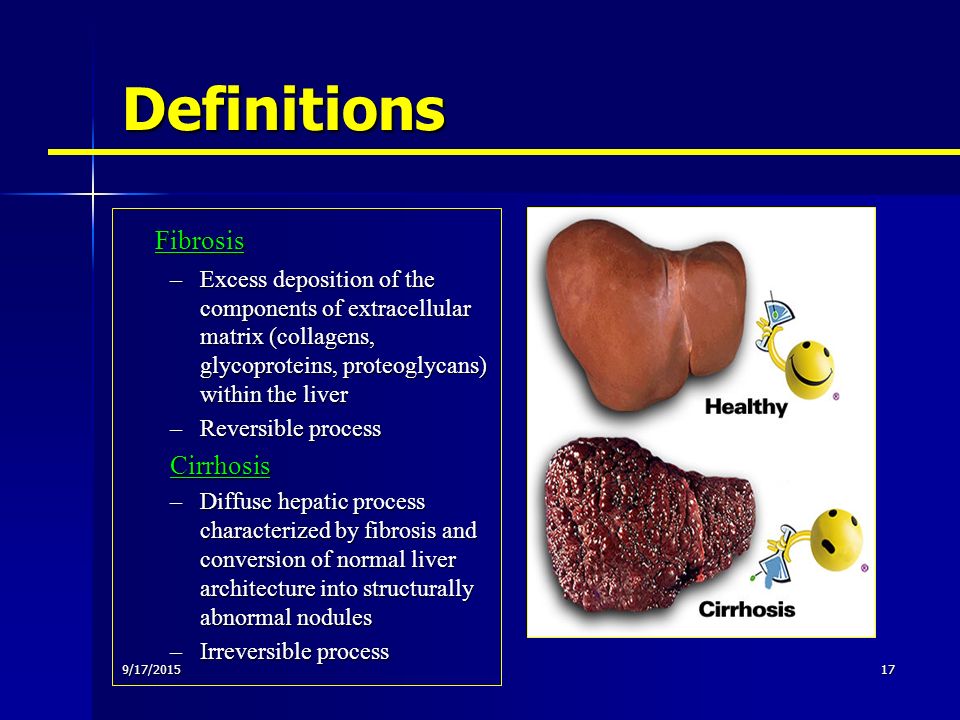
Portal hypertension: This is the most common serious complication. Portal hypertension is an increase in the pressure in your portal vein (the large blood vessel that carries blood from the digestive organs to the liver). This increase in pressure is caused by a blockage of blood flow through your liver as a result of cirrhosis. When blood flow through veins is partially blocked, veins in your esophagus, stomach or intestines can become enlarged (a condition called varices). As the pressure in these veins builds, the veins can bleed or even burst, causing severe internal bleeding.
Additional complications of portal hypertension include:
- Swelling (edema) in your legs, ankles or feet.
- Buildup of fluids in your abdomen (called ascites).
- Swelling/enlargement of your spleen (splenomegaly).
- Formation and dilation (expansion) of blood vessels in the lungs (hepatopulmonary syndrome), leading to low levels of oxygen in the blood and body and shortness of breath.

- Failure of kidney function as a result of having portal hypertension as a complication of cirrhosis (hepatorenal syndrome). This is a type of kidney failure.
- Confusion, difficulty thinking, changes in your behavior, even coma. This occur when toxins from your intestines aren’t removed by your damaged liver and circulate in the bloodstream and buildup in your brain (a condition called hepatic encephalopathy).
Hypersplenism: Hypersplenism is an overactive spleen. This condition causes quick and premature destruction of blood cells.
Infections: Cirrhosis increases your risk of getting and fighting serious infections, such as bacterial peritonitis (infection of the tissue that lines the inner wall of your abdomen).
Malnutrition: Your liver processes nutrients. A damaged liver makes this more difficult and leads to weight loss and general weakness.
Liver cancer: Most people who develop liver cancer have cirrhosis of the liver.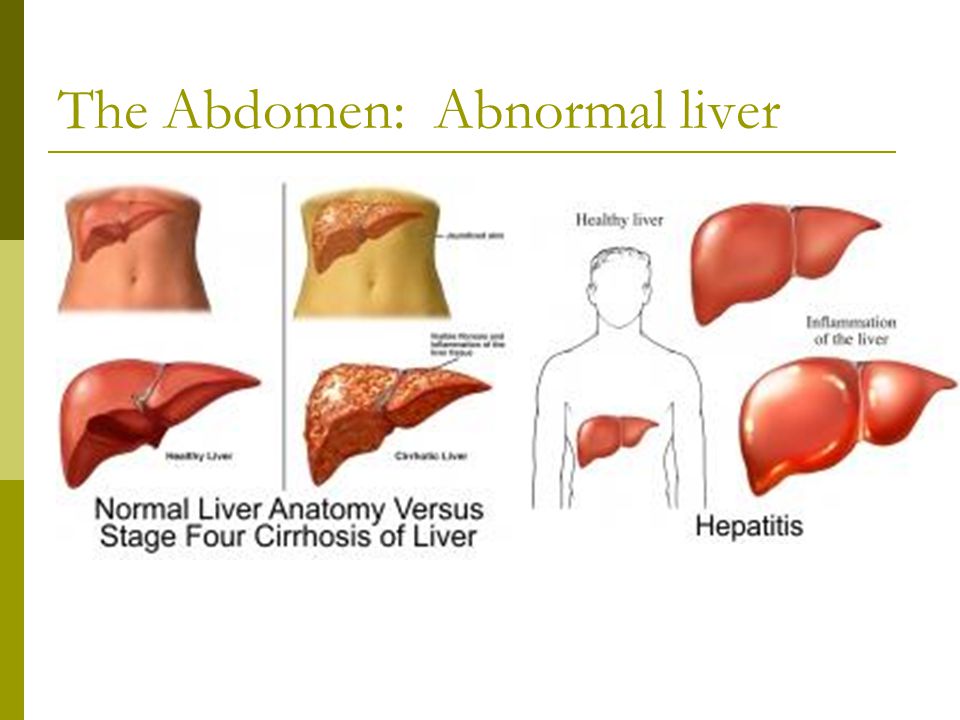
Liver failure: Many diseases and conditions cause liver failure including cirrhosis of the liver. As its name implies, liver failure occurs when your liver isn’t working well enough to perform its many functions.
Diagnosis and Tests
How is cirrhosis of the liver diagnosed?
Your healthcare provider will first ask about your medical history and over-the-counter and prescription drug use. They will also ask about any supplements or herbal products you may take. Your provider may suspect you have cirrhosis if you have a long history of alcohol abuse, injectable drug abuse or have had hepatitis B or C and have the symptoms listed in this article.
To diagnosis cirrhosis, your provider will perform a physical exam and may order one or more of the following tests:
- Physical exam: Your doctor will examine you, looking for the signs and symptoms of cirrhosis including: the red, spider-like blood vessels on your skin; yellowing of your skin or whites of your eyes; bruises on your skin; redness on your palms; swelling, tenderness or pain in your abdomen; enlarged firmer-feeling, bumpy texture to the lower edge of your liver (the part of your liver below the rib cage that can be felt).

- Blood tests: If your doctor suspects cirrhosis, your blood will be checked for signs of liver disease. Signs of liver damage include:
- Lower than normal levels of albumin and blood clotting factors (lower levels means your liver has lost its ability to make these proteins).
- Raised levels of liver enzymes (suggests inflammation).
- Higher level of iron (may indicate hemochromatosis).
- Presence of autoantibodies (may indicate autoimmune hepatitis or primary biliary cirrhosis).
- Raised bilirubin level (suggests liver isn’t working properly to remove bilirubin from the blood).
- High white blood cell count (indicates an infection).
- High creatinine level (a sign of kidney disease that suggests late-stage cirrhosis).
- Lower levels of sodium (is an indicator of cirrhosis).
- Raised level of alpha-fetoprotein (indicates presence of liver cancer).
In addition, other blood work will include a complete blood count to look for signs of infection and anemia caused by internal bleeding and a viral hepatitis test to check for hepatitis B or C.
- Imaging tests: Imaging test show the size, shape and texture of the liver. These tests can also determine the amount of scarring, the amount of fat you have in your liver and fluid in your abdomen. Imaging tests of your liver that could be ordered include computerized tomography (CT) scan, abdominal ultrasound and magnetic resonance imaging (MRI). A special ultrasound, called a transient elastography, measures the fat content and amount of stiffness in your liver. Two different types of endoscopies might be ordered: an endoscopic retrograde cholangiopancreatography to detect bile duct problems, and/or upper endoscopy to detect enlarged veins (varices) or bleeding in your esophagus, stomach or intestines.
- Biopsy: A sample of liver tissue (biopsy) is removed from your liver and examined under the microscope. A liver biopsy can confirm a diagnosis of cirrhosis, determine other causes or extent of liver damage or enlargement or diagnosis liver cancer.

Are there stages of cirrhosis?
If you have been diagnosed with cirrhosis of the liver, you are already beyond the early stages of liver disease. Having cirrhosis means your liver has scar tissue in it because it has been damaged.
Liver specialists and researchers have developed many different scoring systems to predict outcome and to guide treatment for chronic liver disease. Some specific liver diseases also have their own scoring systems. However, not every liver disease has a scoring system and there’s no scoring system if you happen to have more than one liver disease at the same time.
For these reasons, perhaps it’s easier to talk about cirrhosis according to a classification system you are more likely to hear from your healthcare provider. He or she may refer to you having either compensated cirrhosis or decompensated cirrhosis.
Compensated cirrhosis means you have cirrhosis but you don’t yet have noticeable symptoms (you are asymptomatic). Your lab work and imaging findings may not be abnormal. A liver biopsy may be the only way to confirm a diagnosis of cirrhosis. Median survival in patients with compensated cirrhosis is approximately nine to 12 years. (Median is the middle point in set of numbers, so an equal number of individuals survived less than 9 to 12 years as the number of individuals who survived over this time range.)
Your lab work and imaging findings may not be abnormal. A liver biopsy may be the only way to confirm a diagnosis of cirrhosis. Median survival in patients with compensated cirrhosis is approximately nine to 12 years. (Median is the middle point in set of numbers, so an equal number of individuals survived less than 9 to 12 years as the number of individuals who survived over this time range.)
Decompensated cirrhosis means your cirrhosis has worsened to the point that you have noticeable symptoms. Your healthcare provider recognizes your condition based on your history, physical and lab findings. You have at least one complication, which includes jaundice, ascites, hepatic encephalopathy, hepatorenal syndrome, variceal bleeding or liver cancer. You are usually admitted to the hospital for care. Median survival in patients with decompensated cirrhosis is approximately two years.
Management and Treatment
Is there a cure for cirrhosis of the liver?
No, there is no cure for cirrhosis. The damage already done to your liver is permanent. However, depending on the underlying cause of your cirrhosis, there may be actions you can take to keep your cirrhosis from getting worse. These actions include:
The damage already done to your liver is permanent. However, depending on the underlying cause of your cirrhosis, there may be actions you can take to keep your cirrhosis from getting worse. These actions include:
- Stop drinking alcohol.
- Treat chronic hepatitis (if you have it).
- Avoid medications that stress the liver.
- Eat a healthy, well-balanced, low-fat diet, such as the Mediterranean diet.
Follow other tips listed under the Prevention section in this article.
What are the goals of cirrhosis treatment?
The goals of treatment for cirrhosis of the liver are to:
- Slow further damage to your liver.
- Prevent and treat symptoms.
- Prevent and treat complications.
How is cirrhosis of the liver treated?
Treatment depends on what’s causing your cirrhosis and how much damage exists.
Although there is no cure for cirrhosis, treatments can delay or stop its progress and reduce complications.
Treatments for the causes of cirrhosis are as follows:
- Alcohol-related liver disease: If you’ve developed cirrhosis from alcohol abuse, stop drinking alcohol. If you need help, ask your healthcare provider for recommendations for alcohol addiction treatment programs.
- Hepatitis B or C: Several approved antiviral medications are available to treat hepatitis types B and C.
- Nonalcoholic fatty liver disease: Management of nonalcoholic fatty liver disease includes losing weight, following a healthy diet, getting physical exercise and following your provider’s instructions for managing your diabetes.
- Inherited liver diseases: Treatment depends on the specific inherited disease. Treatments are aimed at treating symptoms and managing complications. Treatment of alpha-1 antitrypsin deficiency may include medicine to reduce swelling in your abdomen and legs, antibiotics to treat infections and other medicines for complications.
 For hemochromatosis, treatment is to remove blood to reduce the level of iron in your blood. For Wilson disease, treatment is medicines to remove copper from your body and zinc to prevent absorption of cooper. For cystic fibrosis, medications are prescribed to improve lung function, methods to clear mucous and treatment of complications. Treatment for glycogen storage diseases that involve the liver is to keep glucose at the right level.
For hemochromatosis, treatment is to remove blood to reduce the level of iron in your blood. For Wilson disease, treatment is medicines to remove copper from your body and zinc to prevent absorption of cooper. For cystic fibrosis, medications are prescribed to improve lung function, methods to clear mucous and treatment of complications. Treatment for glycogen storage diseases that involve the liver is to keep glucose at the right level. - Autoimmune hepatitis: Treatment includes medications to suppress your immune system.
- Diseases that damage or block bile ducts in the liver: Treatments include medications such as ursodiol (Actigall®) or surgery to open narrowed or blocked bile ducts.
- Heart failure: Treatment depends on the cause and stage of your heart failure. Medications include drugs to treat high blood pressure, reduce cholesterol, remove excess fluids (edema) from your body and improve heart pumping function.
 Other treatments include implantation of devices to help pump blood or monitor heart rhythm, surgeries to unblock arteries or replace or repair heart valves and transplant surgery to replace your heart.
Other treatments include implantation of devices to help pump blood or monitor heart rhythm, surgeries to unblock arteries or replace or repair heart valves and transplant surgery to replace your heart. - Medications that may be contributing to cirrhosis: Your provider will review all of your medications to determine if any are causing problems for your liver and if so, stop the drug, lower the dosage or change to a different drug if possible.
How are the complications of cirrhosis treated?
Portal hypertension: Portal hypertension is mainly the result of chronic end-stage liver disease. Treatment consists of treating its many complications. Treatments of portal hypertension include:
- Giving beta blockers or nitrates to lower blood pressure in your veins.
- Cutting off blood flow through the varices to stop or reduce further bleeding with procedure using tiny elastic bands (band ligation) or with sclerotherapy.

- Redirecting blood from the portal vein to reduce pressure in the portal vein and to control variceal bleeding. This is achieved using either one of two techniques – distal splenorenal shunt or transjugular intrahepatic portosystemic shunt.
- Prescribing lactulose to absorb toxins in the blood that result from hepatic encephalopathy, which cause symptoms including confusion and other mental changes.
- Draining excess fluid in your abdomen (ascites) in a procedure called paracentesis or taking a diuretic medication to decrease extra fluids (edema) in your legs and other areas of your body.
Bacterial peritonitis: Antibiotics and infusion of a protein (albumin) will be prescribed. Typically patients are admitted to the hospital for treatment and monitoring. Following a diagnosis of bacterial peritonitis, an oral antibiotic will be prescribed for daily use to prevent recurrence of infection.
Liver cancer: Treatment depends on the stage of your cancer and other factors.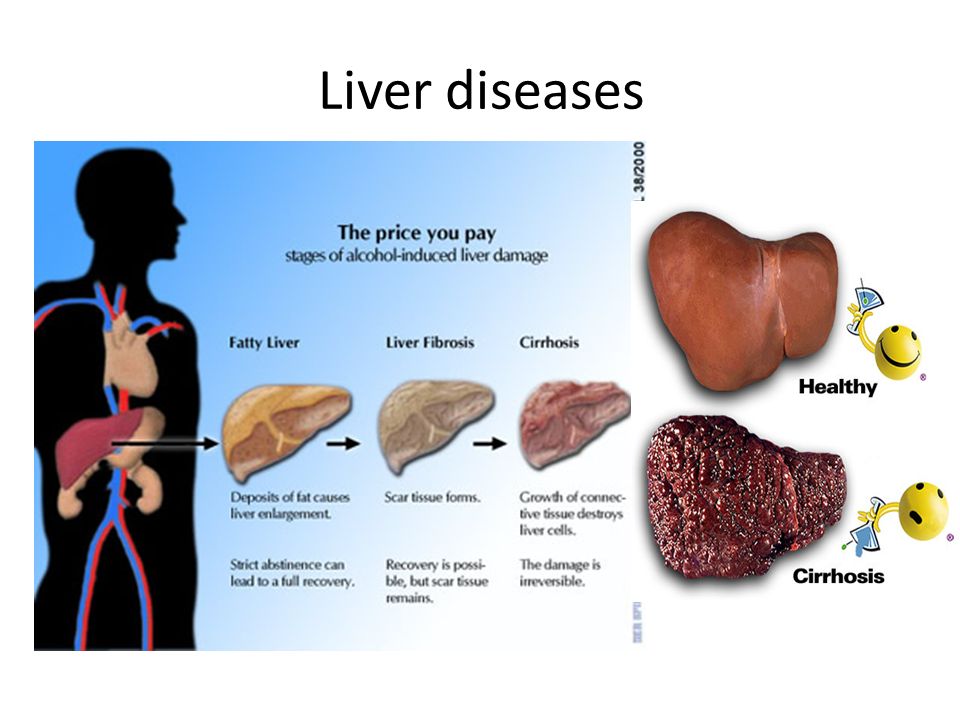 One or more treatments may be tried. Options include surgery to remove part of your liver or your whole liver (to be replaced with a new liver as part of a liver transplantation) and nonsurgical tumor-destroying methods including ablation, chemotherapy, targeted therapy (drugs zero in on cancer genes or tissue), immunotherapy and radiation bead therapy (inject bead that give off radiation into the blood vessels that feed the tumor).
One or more treatments may be tried. Options include surgery to remove part of your liver or your whole liver (to be replaced with a new liver as part of a liver transplantation) and nonsurgical tumor-destroying methods including ablation, chemotherapy, targeted therapy (drugs zero in on cancer genes or tissue), immunotherapy and radiation bead therapy (inject bead that give off radiation into the blood vessels that feed the tumor).
Kidney failure: Treatment may include medication, dialysis and kidney transplant, depending on the cause and extent of failure.
Liver failure: Treatment depends on if you have acute or chronic failure. For chronic liver failure, diet and lifestyle changes include stopping alcohol and medications that harm the liver; eating less red meat, cheese and eggs; losing weight; controlling high blood pressure and diabetes and cutting down on salt.
Acute treatments for liver failure include intravenous fluids to maintain blood pressure, laxatives to help flush toxins from the body and blood glucose monitoring.
If you have either acute or chronic liver failure, your liver specialist may recommend a liver transplant. Liver transplants can come from a living or deceased donor. Only a portion of the donor liver needs to be transplanted. The liver is the only human organ capable of growing back.
Many tests are required of both you (the liver transplant recipient) and the person donating a portion of their liver or the cadaver liver (liver from a deceased person). If your doctors determine that you need a liver transplant, you will be placed on a national liver transplant waiting list, which lists patients by blood type, body size and severity of end-stage liver disease.
Prevention
How can I prevent cirrhosis of the liver?
Food and drink issues:
- Don’t abuse alcohol. If you do drink alcohol, limit how much you drink and how often. If you drink more than two drinks a day if you are a man or more than one if you are a woman, you are increasing your risk.
 A drink is a glass of wine or a 12-ounce can of beer or a 1.5 ounce serving of hard liquor. If you have liver disease, you should not drink alcohol at all.
A drink is a glass of wine or a 12-ounce can of beer or a 1.5 ounce serving of hard liquor. If you have liver disease, you should not drink alcohol at all. - Eat a well-balanced, low-fat diet, such as the Mediterranean diet. A well-balanced healthy diet consists of fruits, vegetables, lean proteins and whole grains.
- Don’t eat raw seafood, especially oysters and clams. These foods can contain a bacteria that can cause serious illness.
- Cut back on the amount of salt in your diet. Use other seasonings to flavor your foods.
Healthy body habits:
- Maintain a healthy weight. Excess body fat can damage your liver. Ask your healthcare provider for a weight loss plan if you are overweight.
- Exercise regularly.
- See your healthcare provider regularly for check-ups. Follow medical recommendations to control obesity, diabetes, hypertension (high blood pressure) and cholesterol (high bad cholesterol [LDL] and/or low good cholesterol [HDL]) and high triglycerides.

- Quit smoking if you smoke.
Healthy liver practices:
- Avoid high-risk behaviors that can lead to infection with hepatitis B or C, such as sharing needles for illegal drug use or having unprotected sex.
- Get vaccinated against hepatitis B. If you already have hepatitis, ask your provider if drug treatment is appropriate for you.
- Get your annual flu shot and ask if a pneumonia vaccine makes sense for you (people with cirrhosis are more likely to get infections).
- Avoid nonsteroidal anti-inflammatory drugs (such as ibuprofen [Advil®, Motrin®] indomethacin [Indocin®] celecoxib [Celebrex®] and aspirin) and high doses of acetaminophen (Tylenol®). Acetaminophen can be taken safely at a dose up to 2,000 mg daily. These drugs can cause or worsen liver function.
- Take all medications and keep all appointments as recommended by your healthcare provider.
Outlook / Prognosis
What can I expect if I have cirrhosis?
Damage already done to your liver is permanent.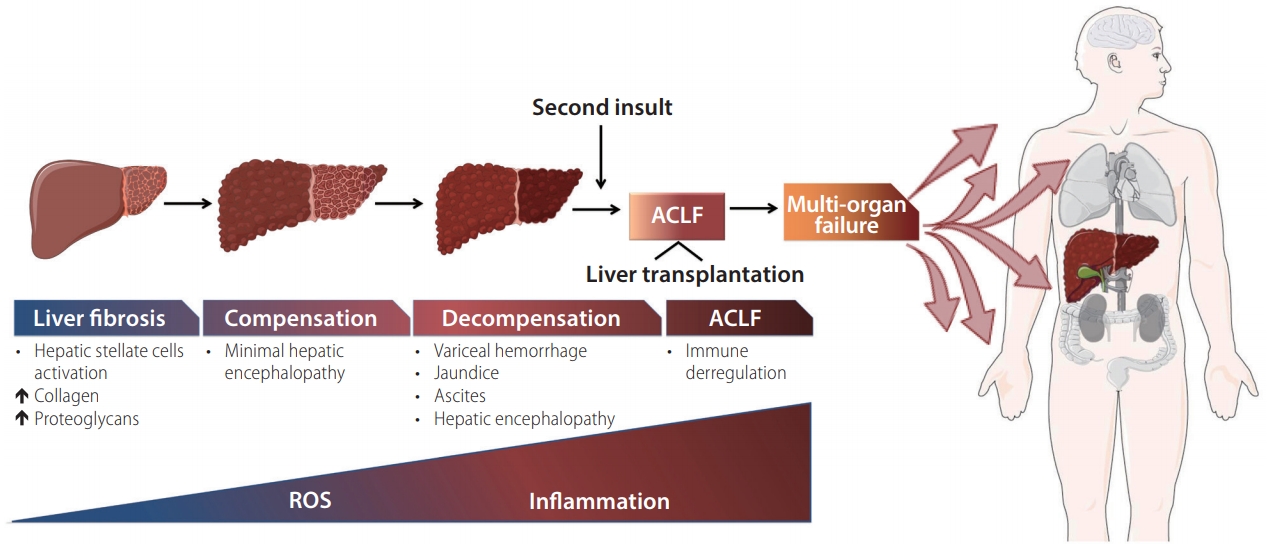 But your liver is a large organ. If part of your liver is still working, you might be able to slow the progression of disease, depending on its cause. For instance, if your cirrhosis is caused by alcohol abuse, you need to stop drinking immediately. If you are obese or have diabetes, you will need to lose weight and manage your blood sugar so you can lower the damage caused by fatty liver disease.
But your liver is a large organ. If part of your liver is still working, you might be able to slow the progression of disease, depending on its cause. For instance, if your cirrhosis is caused by alcohol abuse, you need to stop drinking immediately. If you are obese or have diabetes, you will need to lose weight and manage your blood sugar so you can lower the damage caused by fatty liver disease.
You and your healthcare provider or team will work together to determine what’s causing your cirrhosis and what complications may have resulted from your cirrhosis and treat them accordingly.
What’s the life expectancy for people with cirrhosis?
Life expectancy depends on several factors including the cause and severity of your cirrhosis, your response to treatments, presence of cirrhosis complications, your age and any other existing general health problems. Ask your liver specialist about your life expectancy since every person is unique, with unique overall health issues and specific liver health issues.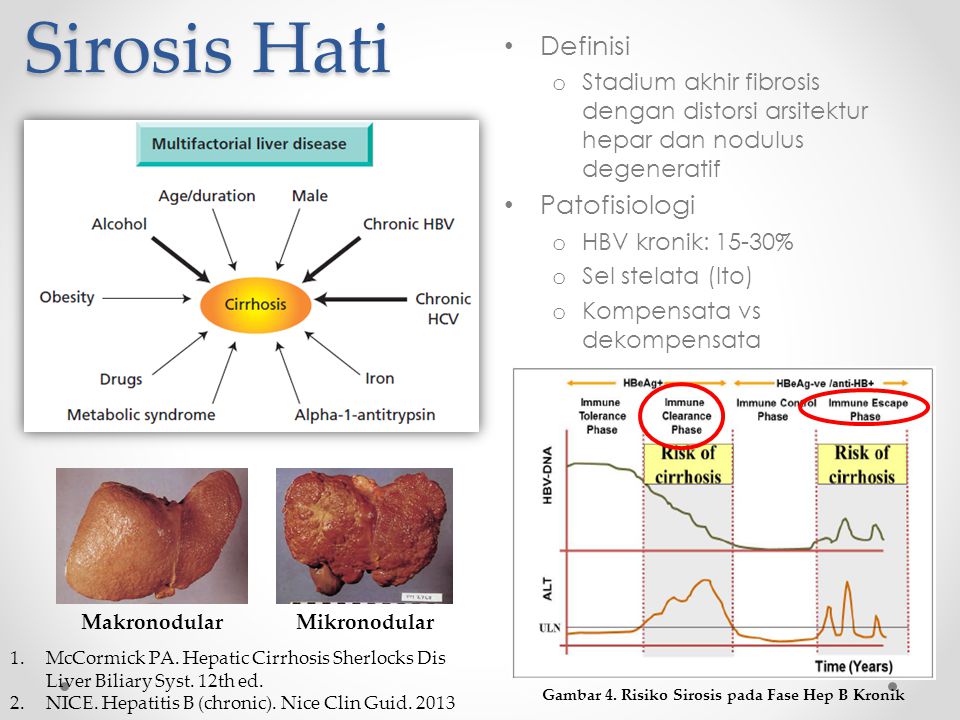
If your cirrhosis is advanced, liver transplantation may be an option. You and your doctors will discuss if this is an option for you.
What’s a Child-Turcotte-Pugh score and MELD score?
A Child-Turcotte-Pugh (CTP) score, also known simply as the Child-Pugh score, is a clinical score that tells your doctors how severe your liver disease is and forecasts your expected survival rate. The scoring system provides a score on the presence of five clinical measures (the lab values of bilirubin, serum albumin and prothrombin time; presence of ascites and hepatic encephalopathy) and the degree of severity of each of these measures.
| Child-Turcotte-Pugh Score | ||
|---|---|---|
| Class Status | Severity of Liver Disease | Two-Year Survival Rate |
| Class A | Mild | 85% |
| Class B | Moderate | 60% |
| Class C | Severe | 35% |
The Model for End-stage Liver Disease (MELD) score is a score that is used to rank the urgency for a liver transplant.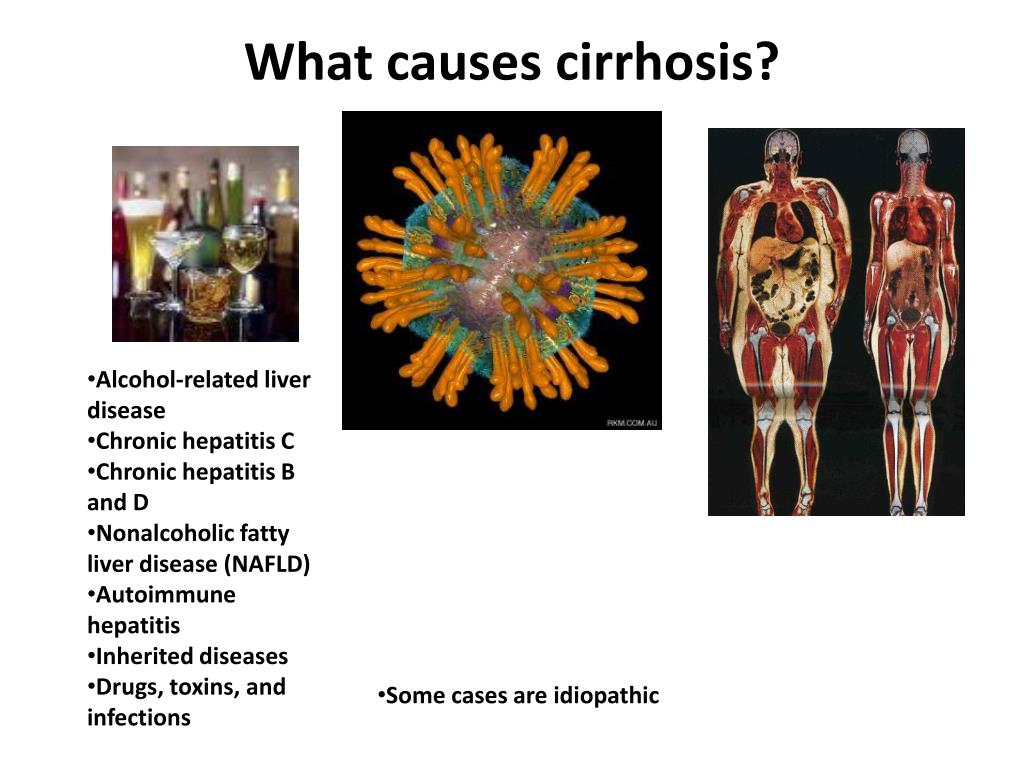 The worse your liver function is, the higher your MELD score and the higher your position is on the transplant list. The Pediatric End-stage Liver Disease (PELD) score is similar to MELD but is a scoring system for children under the age of 12.
The worse your liver function is, the higher your MELD score and the higher your position is on the transplant list. The Pediatric End-stage Liver Disease (PELD) score is similar to MELD but is a scoring system for children under the age of 12.
Living With
When should I call 911 or go to the emergency room?
If you have cirrhosis and experience the following, call 911:
- Your poop (stools) are black and tarry or contain blood (may be maroon or bright red in color).
- You are vomiting blood.
- The whites of your eyes are turning yellow.
- You have difficulty breathing.
- You have abdominal swelling.
- You have muscle tremors or shakiness.
- You are confused, irritable, disoriented, sleepy, forgetful or “foggy.”
- You have a change in your level of consciousness or alertness; you pass out.
What type of healthcare providers will treat my cirrhosis?
Depending on the stage of your cirrhosis, different healthcare providers may be involved in your care. Healthcare professionals likely to be part of your care team include:
Healthcare professionals likely to be part of your care team include:
- Your primary care provider.
- Gastroenterologist (doctor who specializes in conditions of your digestive tract).
- Hepatologist (doctor who specializes in conditions of your liver).
- Nephrologist (doctor who specializes in conditions of your kidney).
- Dietitian.
- Members of a liver transplant team include: hepatologist, transplant surgeon, anesthesiologist, infectious disease specialist, nephrologist, dietitian, transplant pharmacist, physical and occupational therapist, case manager/social worker and nurses.
A note from Cleveland Clinic
Cirrhosis of the liver is a late-stage result of liver disease and its complications. Cirrhosis causes your liver to not function properly. Your liver plays a vital role in many of the processes and functions that keep you alive.
Although scarring from liver disease causes permanent damage, it’s still possible to live a long life.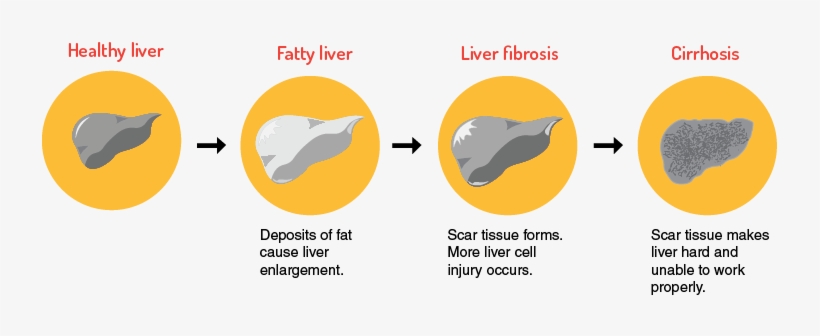 Depending on the underlying cause, it’s possible to slow or stop cirrhosis from worsening. Many of the causes and complications that lead to cirrhosis are treatable or manageable. If you drink alcohol, stop. If you have nonalcoholic fatty liver disease, lose weight and control your metabolic risk factors. If you have diabetes, make sure you are following your healthcare provider’s management recommendations. Take all medications for all your medical conditions as directed by your healthcare team. Get vaccinated for hepatitis A and B.
Depending on the underlying cause, it’s possible to slow or stop cirrhosis from worsening. Many of the causes and complications that lead to cirrhosis are treatable or manageable. If you drink alcohol, stop. If you have nonalcoholic fatty liver disease, lose weight and control your metabolic risk factors. If you have diabetes, make sure you are following your healthcare provider’s management recommendations. Take all medications for all your medical conditions as directed by your healthcare team. Get vaccinated for hepatitis A and B.
If you have end-stage cirrhosis, don’t lose hope. You and your healthcare team will work together to closely manage your condition and put you on a wait list for a donor liver.
Chronic Liver Disease/Cirrhosis | Cedars-Sinai
Not what you’re looking for?
What is cirrhosis?
Cirrhosis is when scar tissue
replaces healthy liver tissue. This stops the liver from working normally.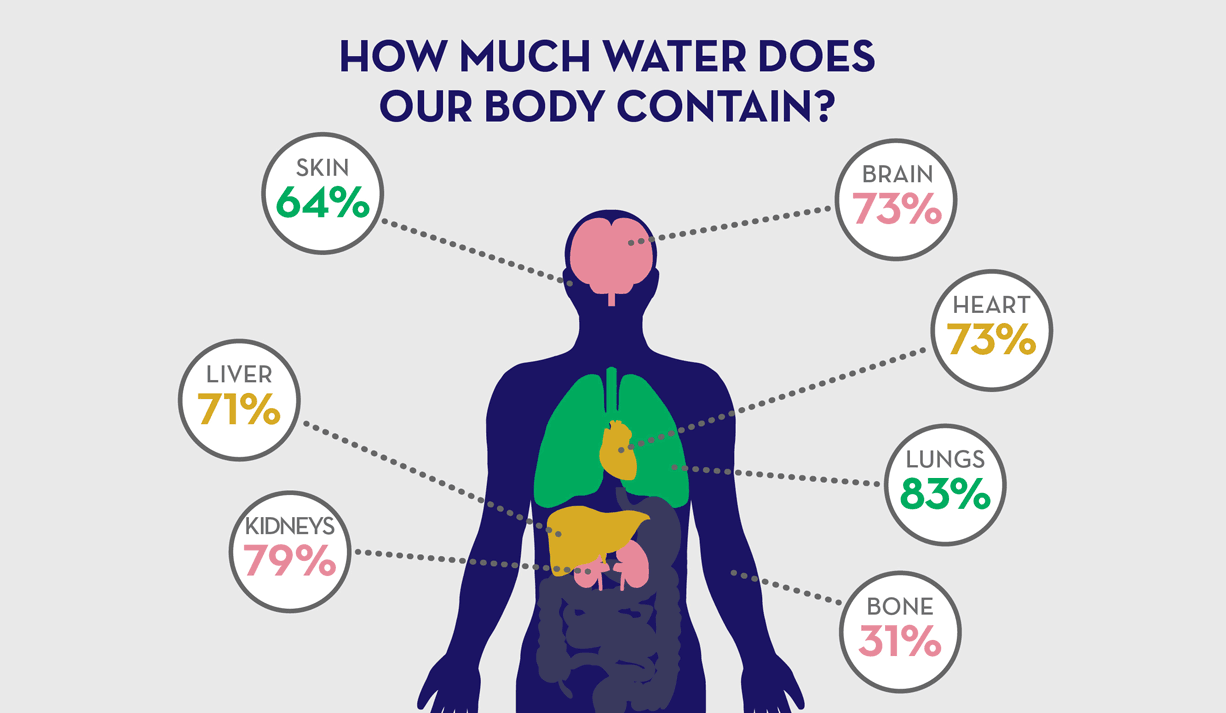
Cirrhosis is a long-term (chronic) liver disease. The damage to your liver builds
up over time.
The liver is your body’s largest internal organ. It lies up under your ribs on the
right side of your belly.
The liver does many important
things, including:
- Removing waste from the body, such as
toxins and medicines - Making bile to help digest food
- Storing sugar that the body uses for
energy - Making new proteins
When you have cirrhosis, scar tissue slows the flow of blood through the liver. Over
time, the liver can’t work the way it should.
In severe cases, the liver gets so badly damaged that it stops working. This is called
This is called
liver failure.
What causes cirrhosis?
The most common causes of cirrhosis are:
- Hepatitis and other viruses
- Long-term alcohol abuse
- Nonalcoholic fatty liver disease (this happens from metabolic syndrome and is caused
by conditions such as obesity, high cholesterol and triglycerides, and high blood
pressure)
Other less common causes of cirrhosis may include:
- Autoimmune disorders, where the body’s infection-fighting system (immune system) attacks
healthy tissue - Blocked or damaged tubes (bile ducts) that carry bile from the liver to the intestine
- Use of certain medicines
- Exposure to certain toxic chemicals
- Repeated episodes of heart failure with blood buildup in the liver
- Parasite infections
Some diseases passed from parent to child (inherited diseases) may also cause cirrhosis.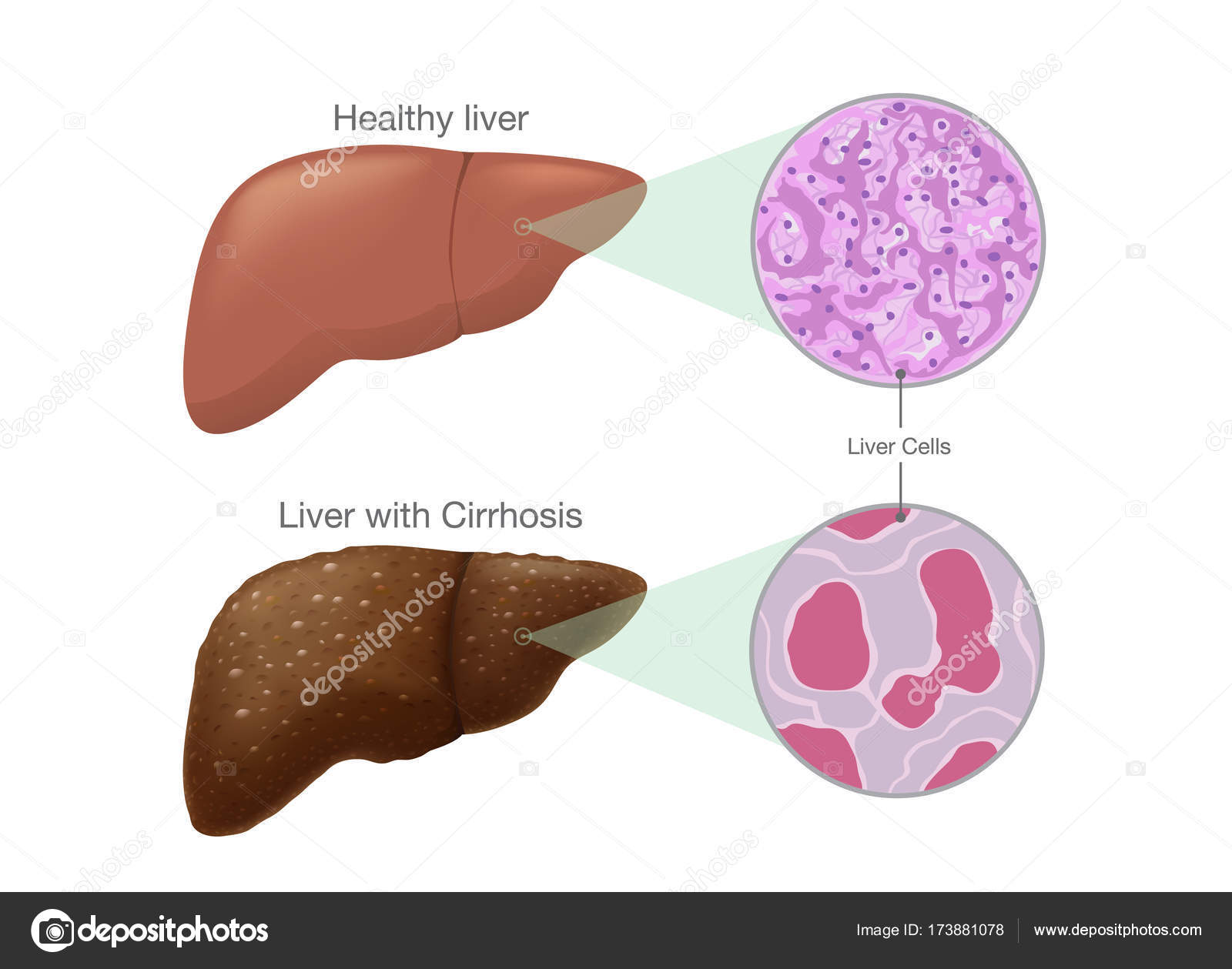
These may include:
- Alpha1-antitrypsin deficiency
- High blood galactose levels
- Glycogen storage diseases
- Cystic fibrosis
- Porphyria (a disorder in which certain chemicals build up in the blood)
- Hereditary buildup of too much copper (Wilson disease) or iron (hemochromatosis) in
the body
What are the symptoms of cirrhosis?
Your symptoms may vary depending on
how severe your cirrhosis is. Mild cirrhosis may not cause any symptoms at all.
Symptoms may include:
- Fluid buildup in the belly (ascites)
- Vomiting blood, often from bleeding in the blood vessels in the food pipe (esophagus)
- Gallstones
- Itching
- Yellowing of the skin and eyes (jaundice)
- Kidney failure
- Muscle loss
- Loss of appetite
- Easy bruising
- Spider-like veins in the skin
- Low energy and weakness (fatigue)
- Weight loss
- Confusion as toxins build up in the blood
The symptoms of cirrhosis may look like other health problems. Always see your healthcare
Always see your healthcare
provider to be sure.
How is cirrhosis diagnosed?
Your healthcare provider will look
at your past health. They will give you a physical exam.
You may also have tests,
including:
- Blood tests. These will include liver function tests to
see if the liver is working the way it should. You may also have tests to see if your
blood is able to clot. - Liver biopsy. Small tissue samples are taken from the
liver with a needle or during surgery. The samples are checked under a microscope
to
find out the type of liver disease.
Your healthcare provider may want
you to have these tests:
- CT scan.
 This is an imaging test that uses X-rays and a
This is an imaging test that uses X-rays and a
computer to make detailed images of the body. A CT scan shows details of the bones,
muscles, fat, and organs. - MRI. This test makes detailed pictures of organs and
structures inside your body. It uses a magnetic field and pulses of radio wave
energy. A dye may be shot (injected) into your vein. The dye helps the liver and
other organs to be seen more clearly on the scan. - Ultrasound. This shows your internal organs as they work.
It checks how blood is flowing through different blood vessels. It uses
high-frequency sound waves and a computer to create images of blood vessels, tissues,
and organs. - Upper endoscopy (EGD).
 A lighted
A lighted
flexible camera is placed through your mouth into your upper digestive tract to look
for enlarged blood vessels that are at risk of bleeding because of your
cirrhosis.
If you have fluid in the belly (ascites), you may need a low-sodium
diet, water pills (diuretics), and removal of the fluid with a needle
(paracentesis).
How is cirrhosis treated?
Cirrhosis is a progressive liver
disease that happens over time. The damage to your liver can sometimes reverse or
improve if the trigger is gone, such as by treating a viral infection or by not drinking
alcohol.
The goal of treatment is to slow
down the buildup of scar tissue and prevent or treat other health problems.
In many cases, you may be able to
delay or stop any more liver damage. If you have viral hepatitis, such as hepatitis
If you have viral hepatitis, such as hepatitis
B or
C, it may be treated to delay worsening of your liver disease.
Your treatment may include:
- Eating a healthy diet, low in
sodium - Not using alcohol or illegal
drugs - Managing any health problems that
happen because of cirrhosis
If you have metabolic syndrome, it’s important to lose weight and also manage any
underlying conditions such as diabetes.
Talk with your healthcare provider
before taking prescription medicines, over-the-counter medicines, or vitamins.
If you have severe cirrhosis,
treatment can’t control other problems. A liver transplant may be needed. Other
treatments may be specific to your cause of cirrhosis, such as controlling excessive
iron or copper levels or using immune suppressing medicines.
Be sure to ask your healthcare
provider about recommended vaccines. These include vaccines for viruses that can cause
liver disease.
What are possible complications of cirrhosis?
Cirrhosis can cause other health problems such as:
- Portal hypertension. The portal vein carries blood from
your intestines and spleen to your liver. Cirrhosis slows the normal flow of blood.
That raises the pressure in the portal vein. This is called portal hypertension. - Enlarged blood vessels. Portal hypertension may cause
abnormal blood vessels in the stomach (called portal gastropathy and vascular
ectasia) or enlarged veins in the stomach and the food pipe or esophagus (called
varices). These blood vessels are more likely to burst due to thin walls and higher
pressure. If they burst, severe bleeding can happen. Seek medical attention right
away. - Ascites. Fluid collecting in your belly. This can become
infected. - Kidney disease or failure.
- Easy bruising and severe bleeding. This happens when the
liver stops making proteins that are needed for your blood to clot. - Type 2 diabetes. When you have cirrhosis, your body does
not use insulin properly (insulin resistance). The pancreas tries to keep up with
the
need for insulin by making more, but blood sugar (glucose) builds up. This causes
type 2 diabetes. - Liver cancer. You will be screened with an imaging test
(ultrasound, for instance) and sometimes blood tests every 6 months if you have
cirrhosis.
Key points about cirrhosis
- Cirrhosis is when scar tissue replaces
healthy liver tissue. This stops the liver from working normally. - Cirrhosis is a long-term (chronic)
liver disease. - The most common causes are hepatitis
and other viruses, and alcohol abuse. Other medical problems can also cause it. - The damage to the liver usually can’t
be reversed. - The goal of treatment is to slow down
the buildup of scar tissue and prevent or treat any problems that happen. - Lifestyle changes, such as not drinking alcohol, can sometimes
help improve liver function. - In severe cases, you may need a liver
transplant.
Next steps
Tips to help you get the most from a visit to your healthcare provider:
- Know the reason for your visit and what you want to happen.
- Before your visit, write down questions you want answered.
- Bring someone with you to help you ask questions and remember what your provider tells
you. - At the visit, write down the name of a
new diagnosis and any new medicines, treatments, or tests. Also write down any new
instructions your provider gives you. - Know why a new medicine or treatment
is prescribed and how it will help you. Also know what the side effects are. - Ask if your condition can be treated in other ways.
- Know why a test or procedure is recommended and what the results could mean.
- Know what to expect if you do not take the medicine or have the test or procedure.
- If you have a follow-up appointment, write down the date, time, and purpose for that
visit. - Know how you can contact your provider
if you have questions.
Medical Reviewer: Jen Lehrer MD
Medical Reviewer: Raymond Turley Jr PA-C
Medical Reviewer: L Renee Watson MSN RN
© 2000-2021 The StayWell Company, LLC. All rights reserved. This information is not intended as a substitute for professional medical care. Always follow your healthcare professional’s instructions.
Not what you’re looking for?
Cirrhosis in Children: Symptoms & Treatment
What Is Cirrhosis?
Cirrhosis (pronounced sur-o-sis) is a stage of liver disease that occurs when cells in the liver are damaged and scar tissue forms. This scar tissue causes blood flow to be blocked and waste products to build up in the body. In cirrhosis, normal areas of liver are surrounded by scarred areas that do not function properly.
Cirrhosis in pediatric patients causes normal areas of the liver to be surrounded by scarred areas that do not function properly.
People often think of cirrhosis as a disease caused by long-term alcohol abuse. While this is sometimes a factor in adults, cirrhosis in children often stems from a wide variety of liver disorders, including (but certainly not limited to):
- Hepatitis B and Hepatitis C
- Autoimmune hepatitis
- Inherited diseases:
- Bile duct diseases:
- Biliary artresia
- Sclerosing cholangitis
- Congenital hepatic fibrosis
- Choledochal cysts
- Drugs and toxins:
- Isoniazid
- Methotrexate
- Excess vitamin A
- Fatty liver disease
Cirrhosis Symptoms in Children
Liver cirrhosis symptoms itself often causes no symptoms early in the disease process. Symptoms start when there is portal hypertension and/or the liver begins to fail, as scar tissue replaces healthy cells. Symptom severity may depend on the extent of liver damage.
A person in the early stages of cirrhosis may feel fatigued and weak. Sometimes he or she will experience abdominal swelling that feels tender or painful. Family may notice the person has a poor appetite or is losing weight.
As the disease progresses, bile flow is blocked or stopped, and jaundice (yellow skin or eyes) appears. The same bile pigment, bilirubin, which is responsible for the yellow skin tones of jaundice can turn urine dark. Bleeding and bruising can occur more easily and take longer to heal. Other later symptoms, some due to complications, include:
- Reddened palms
- Loss of body hair
- Enlarged liver
- Enlarged spleen
- Appearance of thin, purplish-red, spidery looking blood vessels on the skin, especially around the navel
- Water retention and swelling in the legs and abdomen
- Vomiting blood
- Itching
- Abdominal infections
- Forgetfulness or confusion
- Tremors
- Inability to fully process drugs
- Enlarged, twisted, thin-walled blood vessels called varices in the esophagus and/or stomach that can rupture and lead to life-threatening bleeding
- Liver cancer
Cirrhosis Diagnosis
If your child’s doctor suspects that your child has cirrhosis, he or she will perform tests to confirm or rule out the diagnosis. Tests may include (but are not limited to):
- Blood Tests – to assess how well the liver is working and determine a cause
- CT Scan, Ultrasound, MRI or Liver/Spleen Scan to identify changes in the liver
- Liver Biopsy – analyzing a sample of liver tissue removed via a thin needle inserted into the liver
Cirrhosis Treatment
In general, cirrhosis cannot be cured or reversed, doctors treat it with the following goals:
- Controlling the cause of the liver damage
- Preventing additional damage
- Treating symptoms and complications
- Treating underlying medical conditions
Your child’s doctor may prescribe drugs to treat the underlying cause of the liver disease. Other medications may be used to control symptoms or fight infections. Some medications are prescribed to get rid of excess fluid in the body or reduce the risk of a blood vessel breaking. Others help your child’s body cut down on its absorption of harmful waste products or toxins.
If the complications of cirrhosis can no longer be controlled, or if the liver is in danger of no longer functioning, a liver transplant is often the best option.
Many of the liver disorders that cause cirrhosis in children are not preventable, but there are precautions you can take. Make sure your child receives all recommended immunizations including influenza and hepatitis vaccines at the times your pediatrician recommends. If your child needs to take medications that may damage the liver, follow your doctor’s recommendations about blood tests.
Balanced nutritional intake is important for people who already have cirrhosis of the liver can prevent or slow further liver damage by following their doctor’s instructions regarding diet. Your child may need extra calories to grow properly and to maintain adequate overall strength. If the cirrhosis is more advanced and compromises the liver’s ability to process protein properly, the doctor may recommend limiting protein. The doctor may also recommend limiting salt in your child’s diet, because salt tends to make the body retain water. They may also advise avoiding raw seafood. Make sure your child takes any vitamin supplements prescribed. Due to increased risk of infections, doctors recommend vaccines against flu, pneumonia, and hepatitis for people with cirrhosis.
One of the dangerous complications that can arise in an individual with cirrhosis is variceal hemorrhage. This occurs when an enlarged blood vessel in the esophagus and/or stomach breaks open and causes bleeding. Typically if this occurs one may vomit blood (which could be bright red or black like coffee grounds). Alternatively, blood might be noted in the stools – it could be bright red or black and tarry. This occurrence is a medical emergency. Immediate medical attention should be sought, either by calling for an ambulance or by going to the nearest medical facility.
Learn about other Liver Disease States.
Cirrhosis | NHS inform
Cirrhosis can’t be cured, so treatment aims to manage the symptoms and any complications and stop the condition getting worse.
It’s usually not possible to reverse liver damage that’s already occurred, although recent research suggests this may eventually be possible in cases where the underlying cause of the liver damage can be successfully treated.
Treatment is likely to take place at a hospital with a specialist hepatology unit, which treats disorders of the liver, gall bladder and biliary ducts.
Stopping cirrhosis getting worse
Taking medication to treat the underlying cause of the liver damage and making healthy lifestyle changes can help stop cirrhosis getting worse and reduce your risk of developing further health problems.
Medication
The medication you need will depend on the specific cause of the damage to your liver.
For example, if you have viral hepatitis you may be prescribed anti-viral medications. If you have autoimmune hepatitis you may be given steroid medication (corticosteroids) or medication to suppress your immune system (immunosuppressants).
Lifestyle changes
There are a number of things you can do to help yourself stay healthy and reduce your chances of developing further problems if you have cirrhosis, including:
- completely avoid alcohol, regardless of the cause of your cirrhosis, as alcohol consumption increases the rate at which the condition progresses
- lose weight if you’re overweight or obese
- regular exercise to reduce muscle wasting
- practise good hygiene to reduce your chances of developing infections
- speak to your GP about vaccinations you may need, such as the annual flu vaccine or travel vaccines
- speak to your GP or pharmacist if you’re taking over-the-counter or prescription medications, as cirrhosis can affect the way your body processes some medicines
Malnutrition is common in people with cirrhosis, so it’s important to ensure you have a balanced diet to help you get all the nutrients you need.
Avoiding salty foods and not adding salt to foods you eat can help reduce your risk of developing swelling in your legs, feet and abdomen (tummy) caused by a build up of fluid. See tips for a lower salt diet for more information.
The damage to your liver can also mean it’s unable to store glycogen, a carbohydrate that provides short-term energy. When this happens, the body uses its own muscle tissue to provide energy between meals, which leads to muscle wasting and weakness. Therefore, you may need extra calories and protein in your diet.
Healthy snacking between meals can top up your calories and protein. It may also be helpful to eat 3 or 4 small meals a day, rather than 1 or 2 large meals.
Easing symptoms
A number of treatments can ease the symptoms of cirrhosis, including:
- a low-sodium (salt) diet or tablets called diuretics to reduce the amount of fluid in your body
- tablets to reduce high blood pressure in your portal vein (the main vein that transports blood from the gut to the liver) and prevent or treat any infection
- creams to reduce itching
Managing complications of advanced cirrhosis
In cases of advanced cirrhosis, complications caused by the condition may need treatment.
Swollen varices
If you vomit blood or pass blood in your stools, you probably have swollen veins in your oesophagus (the long tube that carries food from the throat to the stomach). These are known as oesophageal varices.
In these cases, urgent medical attention is required. This means seeing your GP or going to the accident and emergency (A&E) department of your nearest hospital immediately.
Certain procedures can help stop the bleeding and reduce the risk of it happening again, such as:
- Banding – an endoscopy is carried out (a thin, flexible tube is passed down your throat) and a small band is placed around the base of the varices to help control the bleeding.
- Injection glue therapy – following an endoscopy, a type of medical “super glue” is injected into the varices to make the blood clot, which helps to stop the bleeding.
- A Sengstaken tube with a balloon on the end – a special tube is passed down your throat into your stomach and the balloon is inflated. This puts pressure on the varices and helps stop the bleeding. You’ll be heavily sedated during the procedure.
- A transjugular intrahepatic portosystemic stent shunt (TIPSS) – a metal tube called a stent is passed across your liver to join two large veins (the portal vein and hepatic vein). This creates a new route for your blood to flow through, therefore relieving the pressure that causes the varices.
You may also be given a type of medication called a beta-blocker, such as propanolol, to reduce the risk of bleeding or reduce the severity of any bleed that does occur.
Fluid in the tummy and legs
Ascites (a build-up of fluid around your stomach area) and peripheral oedema (fluid around your legs and ankles) are common complications of advanced cirrhosis. They’ll need to be addressed as soon as possible.
You may have 20 to 30 litres of free water in your stomach area (abdomen), which can make it difficult for you to eat and breathe properly. The main treatments for ascites and oedema are restricting sodium (salt) in your diet and taking diuretic tablets, such as spironolactone or furosemide.
If the fluid around your stomach becomes infected, you may need to be treated with antibiotics. Alternatively, antibiotics may be used on a regular basis to prevent infection in people at high risk.
In severe cases of ascites, tubes may be used to drain the fluid from your abdomen. This will usually be repeated every few weeks.
Encephalopathy
People with cirrhosis can sometimes develop problems with their brain function (encephalopathy). This occurs because the liver isn’t clearing toxins properly.
The main treatment for encephalopathy is lactulose syrup. This acts as a laxative (it helps clear the bowels) and helps the body remove the toxins that build up in the body when the liver is failing. In some cases, other laxatives or an enema may be used.
Bleeding
Cirrhosis can affect the liver’s ability to make the blood clot (thicken), leaving you at risk of severe bleeding if you cut yourself. Vitamin K and a blood product called plasma can be given in emergencies to treat episodes of bleeding. You’ll need to apply pressure to any cuts that bleed.
Therefore, you should seek specialist advice before having medical procedures, including any dental work.
Liver transplant
Your liver may stop functioning if it’s severely damaged by scarring. In this situation, a liver transplant is the only option. This is a major procedure that involves removing your diseased liver and replacing it with a healthy donor liver.
However, you’ll probably have to wait a long time for a liver transplant because there are more people waiting for a transplant than there are donors.
The NHSBT Organ Donation website has more information about transplants and joining the Organ Donor Register.
Fatty Liver Disease | MedlinePlus
What is fatty liver disease?
Your liver is the largest organ inside your body. It helps your body digest food, store energy, and remove poisons. Fatty liver disease is a condition in which fat builds up in your liver. There are two main types:
- Nonalcoholic fatty liver disease (NAFLD)
- Alcoholic fatty liver disease, also called alcoholic steatohepatitis
What is nonalcoholic fatty liver disease (NAFLD)?
NAFLD is a type of fatty liver disease that is not related to heavy alcohol use. There are two kinds:
- Simple fatty liver, in which you have fat in your liver but little or no inflammation or liver cell damage. Simple fatty liver typically does not get bad enough to cause liver damage or complications.
- Nonalcoholic steatohepatitis (NASH), in which you have inflammation and liver cell damage, as well as fat in your liver. Inflammation and liver cell damage can cause fibrosis, or scarring, of the liver. NASH may lead to cirrhosis or liver cancer.
What is alcoholic fatty liver disease?
Alcoholic fatty liver disease is due to heavy alcohol use. Your liver breaks down most of the alcohol you drink, so it can be removed from your body. But the process of breaking it down can generate harmful substances. These substances can damage liver cells, promote inflammation, and weaken your body’s natural defenses. The more alcohol that you drink, the more you damage your liver. Alcoholic fatty liver disease is the earliest stage of alcohol-related liver disease. The next stages are alcoholic hepatitis and cirrhosis.
Who is at risk for fatty liver disease?
The cause of nonalcoholic fatty liver disease (NAFLD) is unknown. Researchers do know that it is more common in people who
NAFLD affects about 25% of people in the world. As the rates of obesity, type 2 diabetes, and high cholesterol are rising in the United States, so is the rate of NAFLD. NAFLD is the most common chronic liver disorder in the United States.
Alcoholic fatty liver disease only happens in people who are heavy drinkers, especially those who have been drinking for a long period of time. The risk is higher for heavy drinkers who are women, have obesity, or have certain genetic mutations.
What are the symptoms of fatty liver disease?
Both NAFLD and alcoholic fatty liver disease are usually silent diseases with few or no symptoms. If you do have symptoms, you may feel tired or have discomfort in the upper right side of your abdomen.
How is fatty liver disease diagnosed?
Because there are often no symptoms, it is not easy to find fatty liver disease. Your doctor may suspect that you have it if you get abnormal results on liver tests that you had for other reasons. To make a diagnosis, your doctor will use
- Your medical history
- A physical exam
- Various tests, including blood and imaging tests, and sometimes a biopsy
As part of the medical history, your doctor will ask about your alcohol use, to find out whether fat in your liver is a sign of alcoholic fatty liver disease or nonalcoholic fatty liver (NAFLD). He or she will also ask which medicines you take, to try to determine whether a medicine is causing your NAFLD.
During the physical exam, your doctor will examine your body and check your weight and height. Your doctor will look for signs of fatty liver disease, such as
- An enlarged liver
- Signs of cirrhosis, such as jaundice, a condition that causes your skin and whites of your eyes to turn yellow
You will likely have blood tests, including liver function tests and blood count tests. In some cases you may also have imaging tests, like those that check for fat in the liver and the stiffness of your liver. Liver stiffness can mean fibrosis, which is scarring of the liver. In some cases you may also need a liver biopsy to confirm the diagnosis, and to check how bad the liver damage is.
What are the treatments for fatty liver disease?
Doctors recommend weight loss for nonalcoholic fatty liver. Weight loss can reduce fat in the liver, inflammation, and fibrosis. If your doctor thinks that a certain medicine is the cause of your NAFLD, you should stop taking that medicine. But check with your doctor before stopping the medicine. You may need to get off the medicine gradually, and you might need to switch to another medicine instead.
There are no medicines that have been approved to treat NAFLD. Studies are investigating whether a certain diabetes medicine or Vitamin E can help, but more studies are needed.
The most important part of treating alcohol-related fatty liver disease is to stop drinking alcohol. If you need help doing that, you may want to see a therapist or participate in an alcohol recovery program. There are also medicines that can help, either by reducing your cravings or making you feel sick if you drink alcohol.
Both alcoholic fatty liver disease and one type of nonalcoholic fatty liver disease (nonalcoholic steatohepatitis) can lead to cirrhosis. Doctors can treat the health problems caused by cirrhosis with medicines, operations, and other medical procedures. If the cirrhosis leads to liver failure, you may need a liver transplant.
What are some lifestyle changes that can help with fatty liver disease?
If you have any of the types of fatty liver disease, there are some lifestyle changes that can help:
- Eat a healthy diet, limiting salt and sugar, plus eating lots of fruits, vegetables, and whole grains
- Get vaccinations for hepatitis A and B, the flu and pneumococcal disease. If you get hepatitis A or B along with fatty liver, it is more likely to lead to liver failure. People with chronic liver disease are more likely to get infections, so the other two vaccinations are also important.
- Get regular exercise, which can help you lose weight and reduce fat in the liver
- Talk with your doctor before using dietary supplements, such as vitamins, or any complementary or alternative medicines or medical practices. Some herbal remedies can damage your liver.
90,000 WHAT IS SUFFERED BY ALCOHOL
When drinking alcoholic beverages, the negative effects of alcohol affects not only the state of health, but also the general condition of the body. The negative effect of strong drinking is manifested not only in a cloudy mind and headaches, but also in the fact that the work of the main organs, such as the heart or liver, changes over time.
Scientists say that high volumes of alcohol often cause the development of various types of cancer, and as a result, death.Cancer can affect a person’s esophagus, liver, or mammary glands. At the same time, the frequent use of alcoholic beverages harms all organs.
Which organs are affected by alcohol : brain; heart; liver; pancreas; kidneys.
Ethyl alcohol, which is contained in alcoholic beverages, has a negative effect on the human brain. Drinking alcohol slows down the transmission of information in the cerebral cortex, which often causes changes in human behavior and mood.Loss of memory, cloudy consciousness, impaired coordination are the main consequences of exposure to this organ.
What suffers from alcohol , if not the heart. Alcoholic drinks, with prolonged abuse, make the heart muscles weak, which causes circulatory disorders. Such changes lead to shortness of breath, fatigue and coughing. Regular use can cause heart attack or stroke.
The negative effects of alcohol are reflected in the work of the esophagus.From the constant presence of alcohol in the blood, the veins become weak, which can lead to internal bleeding. Usually, such a situation requires urgent resuscitation in order to save a person, so doctors use medication for the patient.
Blood cells are also altered by the presence of alcohol in the body. In a short time, lumps appear in the blood, which spread throughout the body, leading to dehydration. As a result, the aging of the body and the organism as a whole is accelerated.
EFFECT OF ALCOHOL ON LIVER
The liver suffers from alcohol in the first place. A blow to the liver will be negative with any dose, as it breaks down over time. The liver is responsible for many processes within the body: regulation of digestion: fighting infections; withdrawal of toxic substances.
In the presence of alcohol in the body, liver cells die off, and their place is taken by fat and tissue. In this case, alcohol causes fatty degeneration of the liver, which leads to the occurrence of diseases such as hepatosis or cirrhosis, which often lead to death.Cancer can develop over time.
1. Heart
A recent study showed that one glass of red wine, due to the antioxidants it contains, can reduce the risk of cardiovascular disease. But what can happen if one glass turns into one bottle? Over time, it (wine) will weaken the heart muscles and lead to poor circulation. Many alcoholics and drinkers are familiar with a condition called cardiomyopathy, where the heart begins to expand and contract.This condition is accompanied by shortness of breath, cardiac arrhythmias (irregular work), fatigue, an enlarged liver, and a persistent cough. Alcohol abuse can also lead to heart attack, stroke, and hypertension.
2. Brain
In addition to feeling euphoric, alcohol can also have a strong negative effect on the brain. The ethanol (ethyl alcohol) contained in them, due to the property of slowing down the transfer of information between nerve transmitters, poses a serious threat to many parts of this organ.Periodic damage to nerve transmitters can lead to changes in a person’s behavior and mood – depression, memory loss. But alcoholism combined with malnutrition can cause Wernicke-Korsakoff syndrome, “brain edema” characterized by depression, memory loss, confusion, hallucinations, loss of muscle coordination, and an inability to form new memories.
3. Liver
People often underestimate the importance of this organ.But, nevertheless, people with alcohol dependence can tell what functions the liver performs. It is about regulating digestion, absorbing nutrients, fighting infections and removing toxic substances from the body. More than 2 million US residents currently suffer from alcohol-related liver disease. Suffice it to note that in 2009, cirrhosis took the 12th place in the list of the most common causes of death. To cite another indicator, in the United States, one in three organ transplant awaiting organ transplants is in such an extreme position due to alcohol abuse.
4. Pancreas
Large amounts of alcohol can disrupt the functioning of the pancreas. In particular, enzymes secreted for the small intestine are not removed from the organ and, accumulating, cause inflammation. This disease, called pancreatitis, can occur suddenly (acute pancreatitis), in which case abdominal pain and nausea are combined with increased heart rate, diarrhea, and fever. And chronic pancreatitis, during which the pancreas gradually decomposes, can lead to diabetes and even death.
5. Kidneys
Under the influence of alcohol, the body begins to produce urine in large volumes, which can provoke kidney dysfunction. This pair of organs is already having difficulty in regulating fluid flow and hence the distribution of sodium, potassium and chloride ions, resulting in electrolyte imbalances. In addition, excessive alcohol consumption can lead to high blood pressure, the second leading cause of kidney failure.
The most defenseless organ against alcohol is the liver . What does alcohol do to the liver? Under its influence, liver cells die, and scar tissue appears in their place, which cannot perform the basic functions of the organ. The most common disease among alcoholics is cirrhosis of the liver. Cirrhosis is manifested in a decrease in the size of the liver, as a result of which blood stagnation begins in the vessels and an increase in pressure in them. Often, the vessels rupture, and bleeding begins, resulting in death. The effect of alcohol on the body is not positive and always brings only trouble.
Alcohol has a great effect on the brain and mental state of a person. Under the influence of alcohol, the cerebral cortex is destroyed and its parts gradually die off. In places of dead areas, cysts appear. The nervous system suffers under the influence of alcohol no less than all organs. The negative effect of alcohol on a person and his mental state has long been proven by medicine.As a result of alcohol abuse, the patient begins to have problems with memory, concentration of attention is lost, mental development decreases and personality degradation occurs. Alcohol consumed in high doses can be fatal.
Alcoholic drinks poison our lives and cripple our future offspring. This is especially true for women.
What does alcohol do to a woman’s body? Unlike men, female reproductive cells are given to a woman for everything at once and for life.With every glass of wine or bottle you drink, the germ cells are damaged. The more alcohol is consumed, the more cells are affected. These cells remain in the body throughout the entire life span, and at the time of fertilization, no one guarantees that it is a healthy egg that will be involved. Thus, an oligophrenic, moron or physically handicapped child may be born.
Now you have a little idea about what alcohol does to a person .If everyone, before drinking alcohol, thought about their effect on the body, then there would be much less patients. If you need help with alcoholism, call and consult
Life is the most precious thing we have.
Take care and be healthy!
Head of the 2nd therapeutic department Savchenko E.P.
Hepatology Center in Moscow | Center for Hepatology – “HEPATITIS.RU “
Diagnosis and treatment of hepatitis “B” >>>
Hepatitis “B” treatment
Viral hepatitis B (HBV) is a global, worldwide problem, more than 250 million people are infected with it, the number of patients has doubled over the past 5 years, and every year it is increasing by 50 million
Forms of viral hepatitis B
The hepatitis B virus infects the liver in acute or chronic form. In the acute form of the disease, characteristic symptoms appear within 6 months after infection – yellowness of the skin, nausea, dark urine, increased fatigue, fever, and abdominal pain.Sometimes the acute course of viral hepatitis B leads to the development of fatal liver failure. In 15-20%, acute viral hepatitis becomes a chronic, asymptomatic form, 30% of them – with a progressive course, of which in 70% of cases leading to liver cirrhosis within 2-5 years. Hepatitis B is a high risk of death from cirrhosis and hepatocellular carcinoma (liver cancer).
Routes of transmission of viral hepatitis B
Infection with viral hepatitis B occurs through contact with blood (medical manipulations – operations, dentistry, blood transfusions, diagnostic procedures, as well as manicure, tattoos, etc.).) The sexual transmission of the virus is also relevant. The virus can be acquired during pregnancy from an infected mother. The virus is not transmitted by the household route. The virus persists in the external environment for up to 7 days.
Prevention of viral hepatitis B infection
Viral hepatitis B disease can be prevented by vaccination, which is given to a child at birth in most countries of the world and which protects in the first 8 years of life. It is necessary to regularly revaccinate.
Diagnostics of viral hepatitis B
Since chronic viral hepatitis B is asymptomatic, diagnosis is possible only by laboratory methods. The main indicator of the presence of the virus is antibodies to the surface antigen – HbsAg.
Acute hepatitis is characterized by the presence of IgM antibodies to the nuclear antigen – anti-HBcor IgM, a marker of a high level of activity and infectiousness of the virus – HBeAg. The main indicator of the danger of the virus is the viral load, which is determined by PCR with a quantitative assessment of the concentration of the virus in ml of blood – HBV-DNA.
Hepatitis virus D – possible dangerous co-infection
The hepatitis B virus can be accompanied by the hepatitis D virus, which almost always causes irreversible changes in the liver (cirrhosis), therefore, in all cases of hepatitis B detection, it is necessary to conduct a study for the hepatitis D virus.
Hepatitis B treatment
There are currently no antiviral drugs for the treatment of hepatitis B that can completely remove the virus.Therefore, antiviral drugs existing in the world – nucleoside (nucleotide) analogs are used to suppress viral replication in order to stop or slow down the development of cirrhosis, reduce the risk of liver cancer and increase the duration and quality of life of patients with viral hepatitis B. Such drugs include entecavir, tenofovir and other drugs. In some cases, alpha interferon is prescribed.
Currently, a new drug is being developed – MERCLUDEX.
Is the blood of an antiviral patient contagious?
After a course of therapy with antiviral drugs, the virus remains in the body, so the patient’s blood is infectious.
Who can be prescribed antiviral therapy for hepatitis B.
Good reasons are needed to prescribe antiviral therapy. The reason for starting therapy is a high level of HBV DNA in the blood, increased activity of liver enzymes and moderate or severe fibrosis (more than F2 on the METAVIR scale). The duration of therapy cannot be less than 5 years. Sometimes the course of treatment is prescribed for life if the degree of liver damage is close to cirrhosis, or cirrhosis has already been formed.Antiviral drugs are tablets that are well tolerated and rarely cause drug resistance. The drugs have an anti-fibrotic effect (reverse development of fibrosis).
The decision on the appointment of therapy should be made by a hepatologist after an appropriate examination. The European Association for the Study of the Liver recommends that all patients with liver cirrhosis should receive treatment regardless of the level of viremia, as should patients with a family history of liver cancer and cirrhosis.
Patients with a viremia level of more than 20,000 IU in ml of blood and ALT 2 times higher than the norm are prescribed treatment regardless of the degree of fibrosis.
Lifetime control.
If there are no grounds for the use of antiviral therapy, then regular monitoring is necessary, at least once a year. The viral load and the state of the liver according to biochemical data and the degree of fibrosis should be under control.
Minimize
Diagnostics and treatment of hepatitis “C” >>>
Hepatitis “C”.Treatment
Chronic viral hepatitis C is a dangerous infectious disease that causes liver damage with a possible outcome in cirrhosis and liver cancer. According to statistics, more than 200 million people in the world suffer from viral hepatitis C, in Russia there are about 6 million, and every year the number of cases increases.
In the near future, it is expected that the number of patients with liver cirrhosis will increase by 60%, and by almost 70% – with liver cancer. The disease is asymptomatic, therefore, there are frequent cases of initial medical attention in an advanced stage, which is difficult to treat and requires a liver transplant.
If hepatitis C is detected on time, in the early stages, then modern antiviral therapy, highly effective and comfortable, allows in a short time (three months) to completely remove the virus with a high probability of recovery (up to 99%), that is, hepatitis C is a completely curable disease …
For early detection of the virus, it is advisable to undergo regular examination, since infection with the virus is possible with any medical manipulations related to blood: operations, gastroscopy, dentistry, as well as tattoos, manicure, etc.Hepatitis C is extremely rarely sexually transmitted and is not transmitted in the household.
Diagnosis of hepatitis C begins with the determination of antibodies to the virus (anti-HCV), which are most often detected during random examination, for example, in preparation for surgery, pregnancy, IVF, at any hospitalization. Detection of antibodies in the blood indicates contact with the virus, but not enough for a diagnosis. It is necessary to undergo a PCR examination to detect the virus RNA in the blood, which indicates an active process and requires treatment.
For the appointment of therapy, a complete standard examination includes information about the virus, that is, its varieties (genotype, there are six of them, sometimes they are treated differently), viral load (the amount of virus in the blood), about the state of the liver and the absence of concomitant diseases that prevent the appointment of therapy : cardiovascular, kidney, thyroid.
Various methods are used to assess the state of the liver: ultrasound diagnostics, blood biochemical parameters, elastometry. Depending on the stage of the disease, the duration of therapy may be different (3 months or 6 months).
For the treatment of hepatitis C, the modern standard is drugs with direct antiviral action, such as SOFOSBUVIR, VELPATASVIR, LEDIPASVIR, VIKEIRA PAK, MAVIRET and others. They are highly effective (the probability of recovery is up to 99%), are well tolerated, and do not worsen the patient’s quality of life during treatment. However, they are not completely safe and require medical supervision.
Most of these drugs are not registered in Russia and are supplied illegally. Treatment with low-quality drugs and without medical supervision (self-medication) is life-threatening, since side effects are realized on vital organs; in addition, exacerbation of chronic diseases is possible. Substandard drugs can cause the virus to mutate, it becomes resistant to drugs, which makes a curable disease incurable. It is also necessary to consider compatibility with other medicinal products due to their interactions.
Minimize
Diagnosis and treatment of fatty hepatosis / hepatic steatosis >>>
Fatty hepatosis is a dangerous disease, not the result of an unhealthy lifestyle
Fatty hepatosis (steatosis, non-alcoholic fatty liver disease) is a gradual degeneration of a normal healthy liver into adipose tissue, which can lead to cirrhosis. On average, in the world, fatty hepatosis is found in 33% of the surveyed. The European Association for the Study of the Liver has recognized that the spread of fatty hepatosis in the world is becoming an epidemic, especially in people over 40 years of age, is a life-threatening and intractable disease.
Cause of fatty hepatosis – metabolic syndrome , insulin resistance. This is a violation of metabolic and hormonal processes in the body, sometimes associated with age-related changes, but is increasingly common in young people. The main manifestations of the metabolic syndrome are a violation of carbohydrate metabolism (diabetes mellitus) and lipid metabolism (an increase in the level of cholesterol and low-density lipids in the blood). In the overwhelming majority of cases, there is an increase in body weight, obesity, which is difficult to control and correct even with a strict diet.
Symptoms of fatty hepatosis: at the initial stages the disease is asymptomatic, which creates an additional risk of detecting the disease at the stage of irreversible changes. Most often, there is severity and pain in the right hypochondrium, bitterness in the mouth and nausea. In the outcome of the disease, an increase in the size of the liver and signs of liver failure are possible: apathy and a general deterioration in well-being, edema, jaundice.
Diagnosis of fatty hepatosis. It is possible to detect the presence of fat in the liver with a simple ultrasound diagnosis. However, this method is not sensitive enough and reveals fatty liver infiltration with fatty damage of at least 15-30% of the liver. Much more sensitive is elastometry on the Fibroscan apparatus with a quantitative assessment function and a sensitivity of 5%. According to the biochemical parameters of ALT, AST, and especially GGT, one can judge the inflammatory process in the liver during its fatty degeneration. Characterized by a change in the blood parameters of carbohydrate metabolism – glucose, insulin, glycated hemoglobin, and lipid metabolism – cholesterol, low density lipids, triglycerides.
Treatment of fatty hepatosis. The disease was recognized as intractable, since there is no single drug for all that acts on the molecular mechanisms of the disease. The tactics of treatment consists in the selection of drugs individually, depending on the metabolic and hormonal disorders identified during the examination.
However, drug therapy cannot normalize all metabolic disorders without following strict recommendations for nutrition and physical activity.Many foods have a profound effect on metabolic processes. They should be excluded, and not for a short time (diet), but for life (lifestyle), as well as obligatory physical activity, which, according to the mechanism of action, contribute to the restoration of processes turned off by metabolic syndrome.
Metabolic syndrome is a lifelong diagnosis that limits life expectancy and is the cause of death or as a result of cirrhosis of the liver, or complications of diabetes mellitus and atherosclerosis, as well as other diseases associated with metabolic and hormonal disorders.
Competent treatment and correct lifestyle can not only cure fatty hepatosis and normalize body weight, but also increase life expectancy and improve its quality.
Minimize
Fibroscan – liver elastometry >>>
New generation fibroscan – new possibilities for diagnostics of liver diseases
What causes liver disease
The main causes of destructive processes in the liver are hepatitis A, B, C, D viruses, alcohol, toxins, metabolic disorders (non-alcoholic fatty liver disease), autoimmune and rare hereditary liver diseases.The most common are viral hepatitis, alcoholic and non-alcoholic fatty liver disease.
What happens with liver disease
All liver diseases, regardless of the cause, are expressed in its destruction with subsequent replacement by connective tissue (fibrosis) or adipose tissue (steatosis). If the pathological process of destruction lasts for years, most often without causing any alarming symptoms, then cirrhosis is formed in the outcome of the disease. Therefore, in any liver disease, the main question is to quantify the extent of its damage.
How to assess the degree of liver damage
There are four degrees of fibrosis F0-F4, of which the fourth is cirrhosis, and three degrees of steatosis S0-S3, depending on the amount of fat in the liver tissue (from 5% minimum to 66% severe).
Of all the existing methods for assessing the state of the liver (biopsy, FibroMax, Fibrotest, elastomeria), the most accurate and safe is elastometry on the Fibroscan apparatus. The main indicator of changes in the structure of the liver is its density, which increases in areas with fibrosis and steatosis, and in different ways.
What are the advantages of the new generation Fibroscan .
Fibroscan of the new generation has two independent sensors for determining fibrosis and steatosis separately from each other. When measuring density on the old-style Fibroscan device, the total degree of damage by two factors is measured, which introduces inaccuracy and is often the cause of incorrect diagnosis and, accordingly, incorrect treatment. For example, in hepatitis B, misidentified high fibrosis (F3-4) due to concomitant steatosis, expensive antiviral therapy may be unnecessarily prescribed instead of treating fatty liver disease.
Fibroscan of the new generation is the most accurate and highly specific measurement of the level of fibrosis and hepatic steatosis independently of each other, painless, fast (15 minutes) and comfortable for the patient, maximally informative for the doctor in terms of diagnosis, choice of therapy and monitoring the effectiveness of treatment.
Elastography, Elastometry and Fibroscanning – What’s the Difference?
Liver Fibroscan is an examination performed with the FibroScan apparatus.The device operates on the patented VCTE technology (Vibration-controlled Transient elastography), which allows diagnosing the state of liver tissue, based on measuring their elasticity, with a graphic image displayed on the monitor.
In this connection, this method of liver diagnostics is called by different names: and Fibroscanning , and Elastometry and Elastography –
It’s all the same .
Minimize
90,000 What alcohol does to the body after 40 years :: Life :: RBC Style
© Sergio Alves Santos / Unsplash
author
Irina Gorbenko
12 October 2018
The British edition of The Telegraph published an article in which, with the help of scientists, explained how alcohol affects the body after 40 years.Here are the main points.
Alcohol affects the body at any age, but after 40 years the consequences of drinking are much more serious than at 20 and 30 years old, says Paul Wallace, professor of health at University College London.According to a psychiatrist who works with elderly patients, Tony Rao, this is because the organs responsible for processing alcohol “age” and work more slowly, which means that harmful substances are in the body longer. In addition, with age, the total amount of fluid in the body decreases, which means that at 40 years old the concentration of alcohol in the blood will be higher than with the same amount drunk at 20 years old, writes The Telegraph in the article What alcohol does to your body after the age of 40.
Brain
Alcohol is often used to improve mood.While we drink, we feel excited and energized, because alcohol, penetrating the blood-brain barrier, suppresses the work of the centers responsible for self-control, judgment and planning. However, this action ends quite quickly, a rollback occurs, and in the morning the person feels depressed and angry.
Alcohol begins to destroy the brain much earlier than the liver, says Dr. Rao. In this case, damage is caused not only by pronounced alcoholism, but also simply by regular drinking.Before being diagnosed with cirrhosis, a person usually goes through depression and problems with self-control. The danger for people over 40 is not only the deterioration of brain function, but also the difficulty of diagnosis. If a bad mood in 20- and 30-year-olds signals to others that they have health problems, then older people are most often said that their character has simply deteriorated. Although it may not be about age, but about the negative influence of alcohol. The good news, however, is that the brain is recovering only six months after quitting alcohol.
Leather
Alcohol increases blood vessels and accelerates blood flow, which can cause chronic reddening of the skin – rosacea. Despite the fact that the redness subsides after a few hours, with regular use of alcohol, the vessels enlarge and the venous network becomes visible on the skin, explains dermatologist Professor Nick Lowe. It can be cured with a laser, however it is best done early.
Another consequence is a skin rash.Alcohol increases stress and anger, which leads to increased levels of androgens (male sex hormones) and contributes to acne formation. In addition, alcohol leads to dehydration of the skin and, as a result, to peeling and the formation of bags under the eyes. The sugar in beer and wine breaks down collagen, which reduces skin elasticity and contributes to skin aging.
Heart
Research suggests that red wine has a positive effect on the cardiovascular system, but only if you drink no more than one glass a day.Exceeding the limit (3-4 glasses for men and 2-3 for women) increases blood pressure in both the short and long term, which means it increases the risk of heart attack. Dr Mike Knepton, associate director of the UK Heart Foundation, said uncontrolled drinking also depletes the heart valves and leads to heart failure.
Liver
Cirrhosis of the liver has ceased to be a disease of alcoholics, it is more and more often diagnosed in middle-aged people who periodically drink alcohol.In youth, with regular alcohol consumption, the liver may become a little overgrown with fat, but if you do not part with the habit after 40 years, fat begins to inflame, scarring appears, the liver shrinks, which leads to cirrhosis in every sixth risk group.
To restore the liver, it is necessary to regularly arrange for it at least three fasting days a week. However, they include not only avoiding alcohol, but also a healthy diet along with physical activity.
Cancer cells
It is impossible to say for sure which alcohol level does not affect the risk of cancer.Once in the body, ethanol breaks down into acetaldehyde, which acts on the cells that cause cancer. Thus, any amount of alcohol can be dangerous, and if a person also smokes, his risk of oral cavity and pharyngeal cancer increases significantly, since alcohol increases the sensitivity of cells to tobacco smoke.
Reproductive function
According to a Danish study, couples who completely give up alcohol have a significantly lower risk of miscarriage compared to even those who drink very rarely and little.Half a bottle of wine a week reduces a woman’s chances of getting pregnant by 18%. In men, alcohol can help lower testosterone levels and lower fertility, especially after 40.
Weight
The body perceives alcohol as a toxin, so it begins to digest it faster than food in order to remove hazardous substances as soon as possible. At the same time, alcoholic beverages are usually high in calories, which means that after the digestive system returns to digesting food, due to an excess of calories, it will be deposited in fat, explains nutritionist Robert Hobson.
Studies have also shown that ethanol suppresses the production of leptin, the hormone responsible for appetite, which is why it becomes difficult for the body to know if it is full or not. Sugary alcoholic beverages increase insulin levels, which aids in fat storage. After 40 years, this fat begins to overgrow the internal organs, which causes the appearance of the so-called beer belly.
Unusual symptoms of liver cirrhosis were named
https: // ria.ru / 20210304 / tsirroz-1599845448.html
Named unusual symptoms of liver cirrhosis
Named unusual symptoms of liver cirrhosis – RIA Novosti, 03/04/2021
Named unusual symptoms of liver cirrhosis
Called liver cirrhosis and may indicate extremely nonspecific symptoms writes Express with reference to the data of British doctors. RIA Novosti, 04.03.2021
2021-03-04T00: 56
2021-03-04T00: 56
2021-03-04T10: 20
science
the whole world
cirrhosis of the liver
/ html / head / meta [@ name = ‘og: title’] / @ content
/ html / head / meta [@ name = ‘og: description’] / @ content
https: // cdnn21.img.ria.ru/images/151181/76/1511817692_0:223:4272:2626_1920x0_80_0_0_ae8852b57415678dd6fef8cfbd3e0a41.jpg
MOSCOW, March 4 – RIA Novosti. Nonspecific and extremely unexpected symptoms can indicate liver cirrhosis, writes Express, citing data from British doctors. According to experts, the following symptoms may indicate the onset and development of the disease: weakness and fatigue, irritability, sleep disturbances. You should also pay attention to bleeding from the nose and gums, frequent nausea, loss of appetite and weight loss that occur without a cause.In addition, the symptoms of cirrhosis are itching, redness of the palms, spider veins on the body, yellowed skin and an eyeball. If these signs are detected, experts recommend that you immediately seek medical advice, undergo an examination, identify the disease and begin treatment. accompanied by irreversible replacement of the parenchymal tissue of the liver with fibrous connective tissue, or stroma. The cirrhotic liver is enlarged or reduced in size, unusually dense, lumpy, rough.Cirrhosis, as a rule, develops with prolonged alcohol intoxication, against the background of viral hepatitis B, C and D and parasitic infections. More rare causes are diseases of the biliary tract, congestive heart failure, various chemical and drug intoxication. Cirrhosis can also develop with hereditary metabolic disorders.
https://ria.ru/20210204/lekarstvo-1595
9.html
the whole world
RIA Novosti
7 495 645-6601
FSUE MIA “Russia Today”
https: // xn – c1acbl2abdlkab1og.xn – p1ai / awards /
2021
RIA Novosti
7 495 645-6601
FSUE MIA “Russia Today”
https: //xn--c1acbl2abdlkab1og.xn –p1ai / awards /
News
ru-RU
https://ria.ru/docs/about/copyright.html
https: //xn--c1acbl2abdlkab1og.xn--p1ai/
RIA News
7 495 645-6601
FSUE MIA “Russia Today”
https: // xn – c1acbl2abdlkab1og.xn – p1ai / awards /
https://cdnn21.img.ria.ru/images/151181/76/1511817692_238-0:4035:2848_1920x0_80_0_0_158e63f31be540acffb60b6fdd34bad9.jpg
RIA Novosti
000 495 645-6601
FSUE MIA Rossiya Segodnya
https: //xn--c1acbl2abdlkab1og.xn--p1ai/awards/
RIA Novosti
7 495 645-6601
FSUE MIA “Russia Today”
https: // xn – c1acbl2abdlkab1og.xn – p1ai / awards /
the whole world, cirrhosis of the liver
MOSCOW, March 4 – RIA Novosti. Nonspecific and extremely unexpected symptoms can indicate cirrhosis of the liver, writes Express, citing data from British doctors.
According to experts, the following signs may indicate the onset and development of the disease: weakness and fatigue, irritability, sleep disturbances. You should also pay attention to bleeding from the nose and gums, frequent nausea, loss of appetite and weight loss that occur without a cause.
In addition, the symptoms of cirrhosis are pruritus, redness of the palms, spider veins on the body, yellowed skin and eyeball.

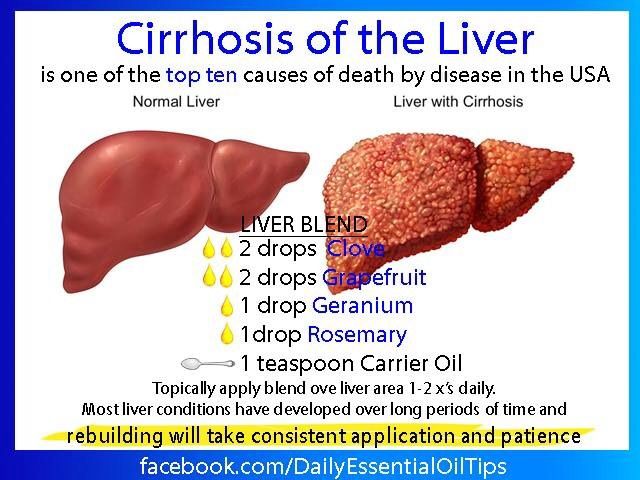
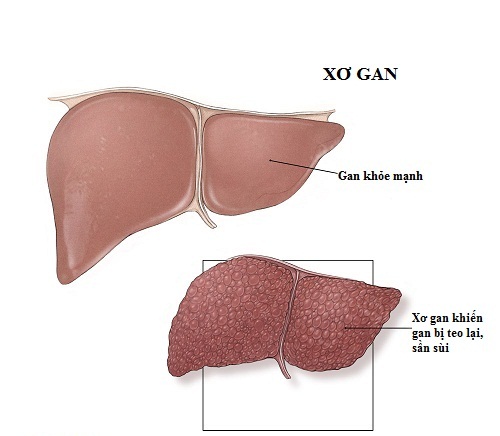

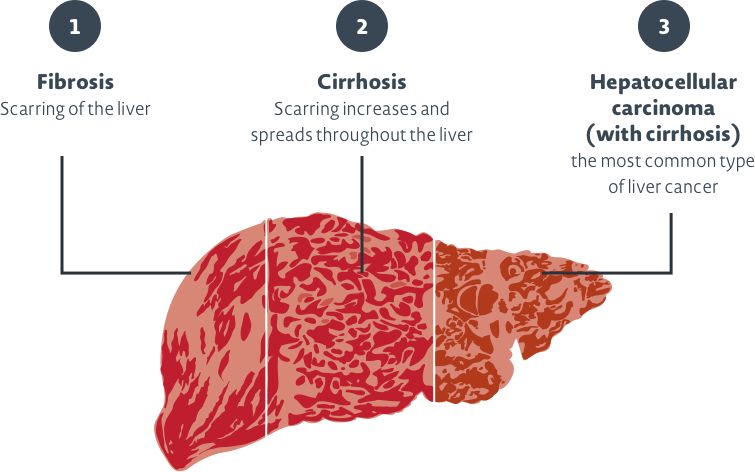 A special ultrasound, called a transient elastography, measures the fat content and amount of stiffness in your liver. Two different types of endoscopies might be ordered: an endoscopic retrograde cholangiopancreatography to detect bile duct problems, and/or upper endoscopy to detect enlarged veins (varices) or bleeding in your esophagus, stomach or intestines.
A special ultrasound, called a transient elastography, measures the fat content and amount of stiffness in your liver. Two different types of endoscopies might be ordered: an endoscopic retrograde cholangiopancreatography to detect bile duct problems, and/or upper endoscopy to detect enlarged veins (varices) or bleeding in your esophagus, stomach or intestines.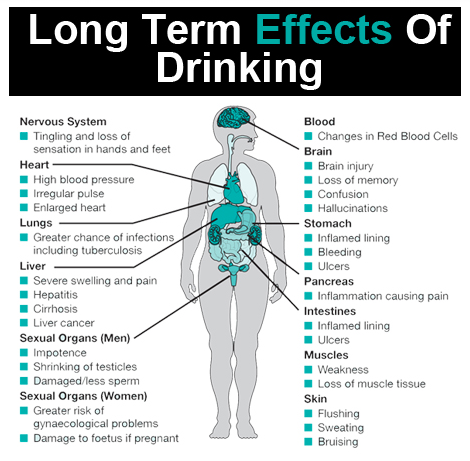
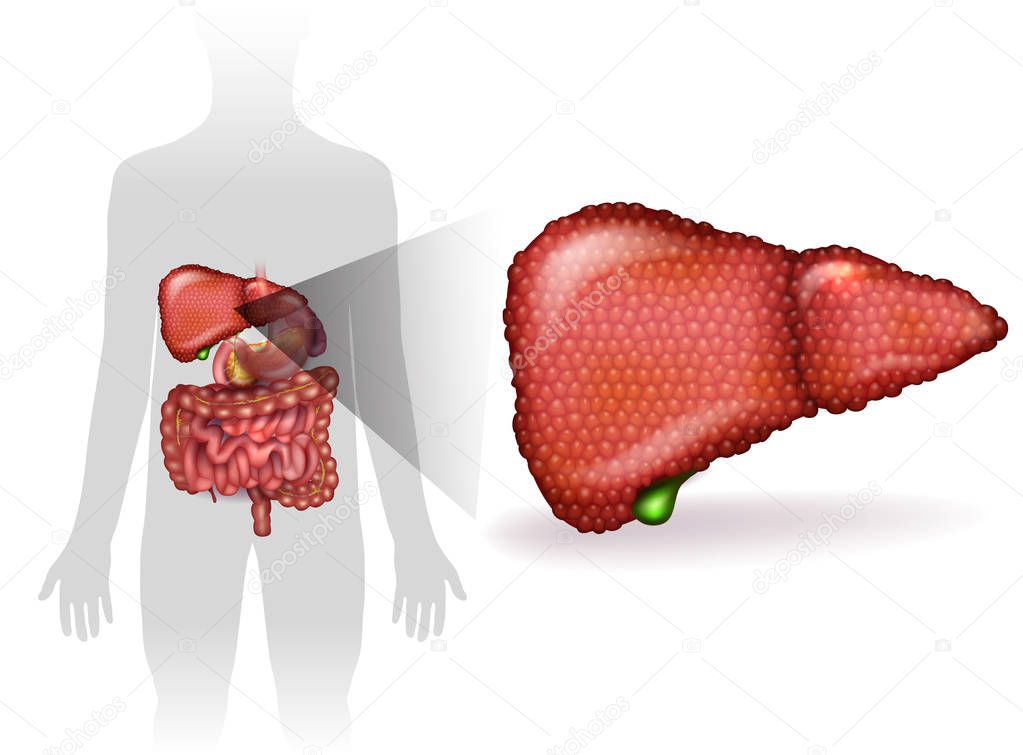

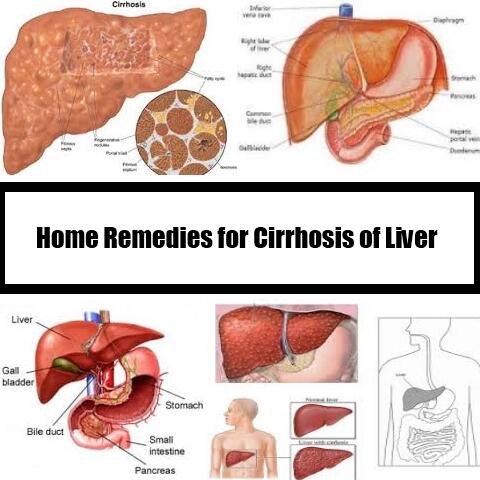


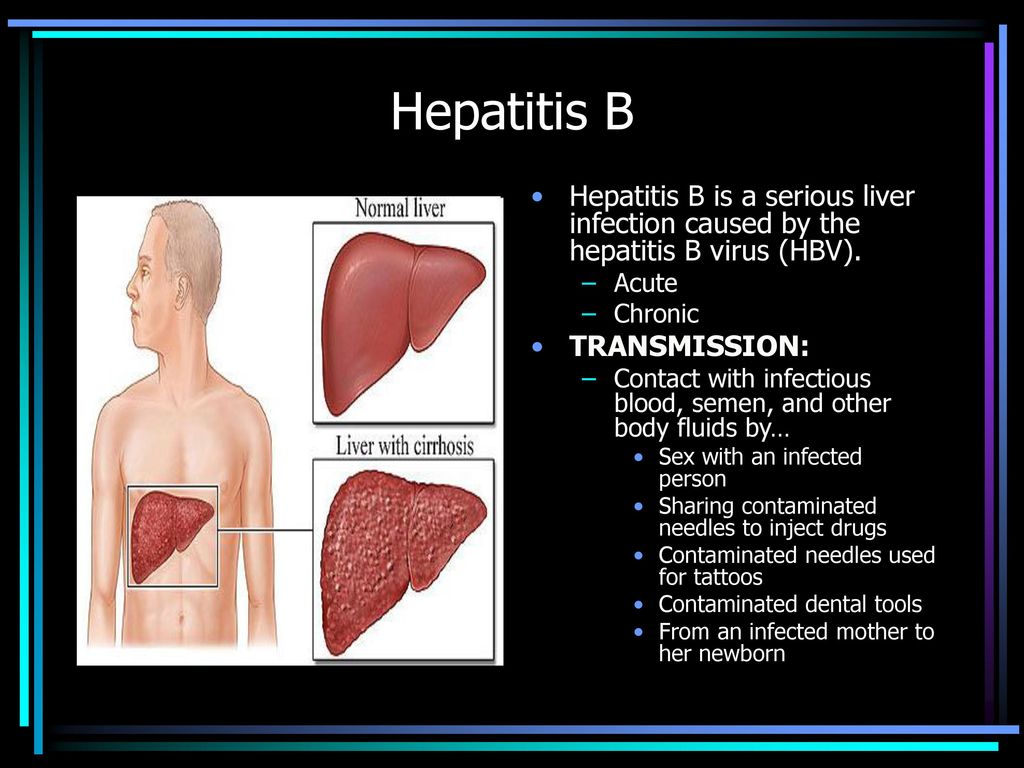 These drugs can cause or worsen liver function.
These drugs can cause or worsen liver function.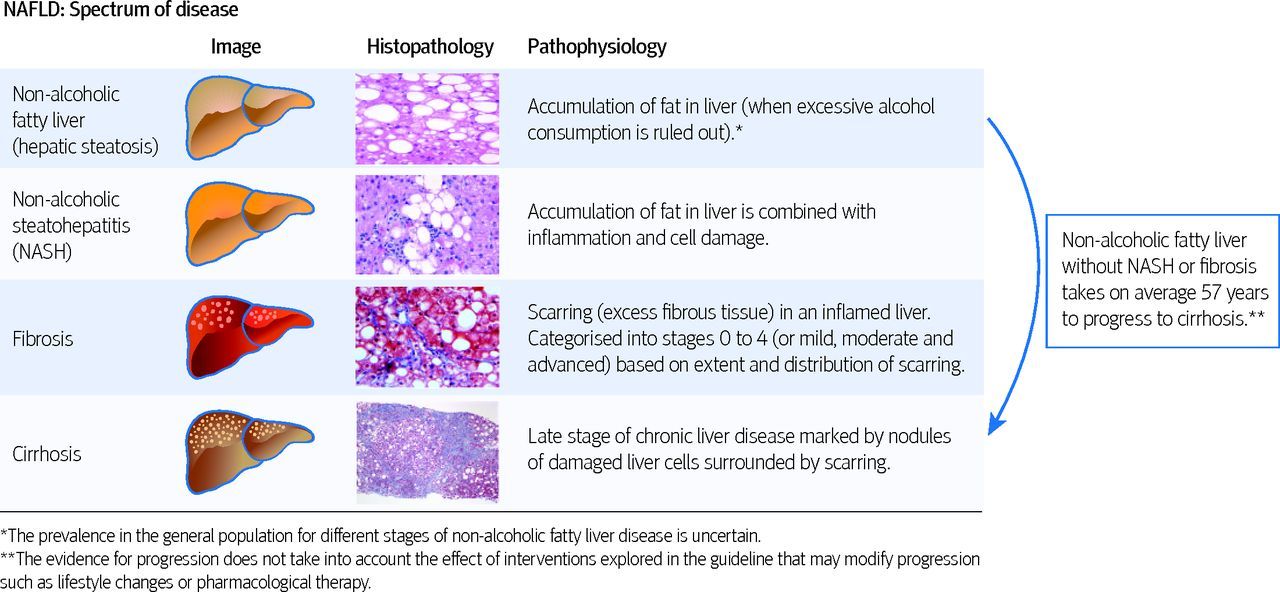
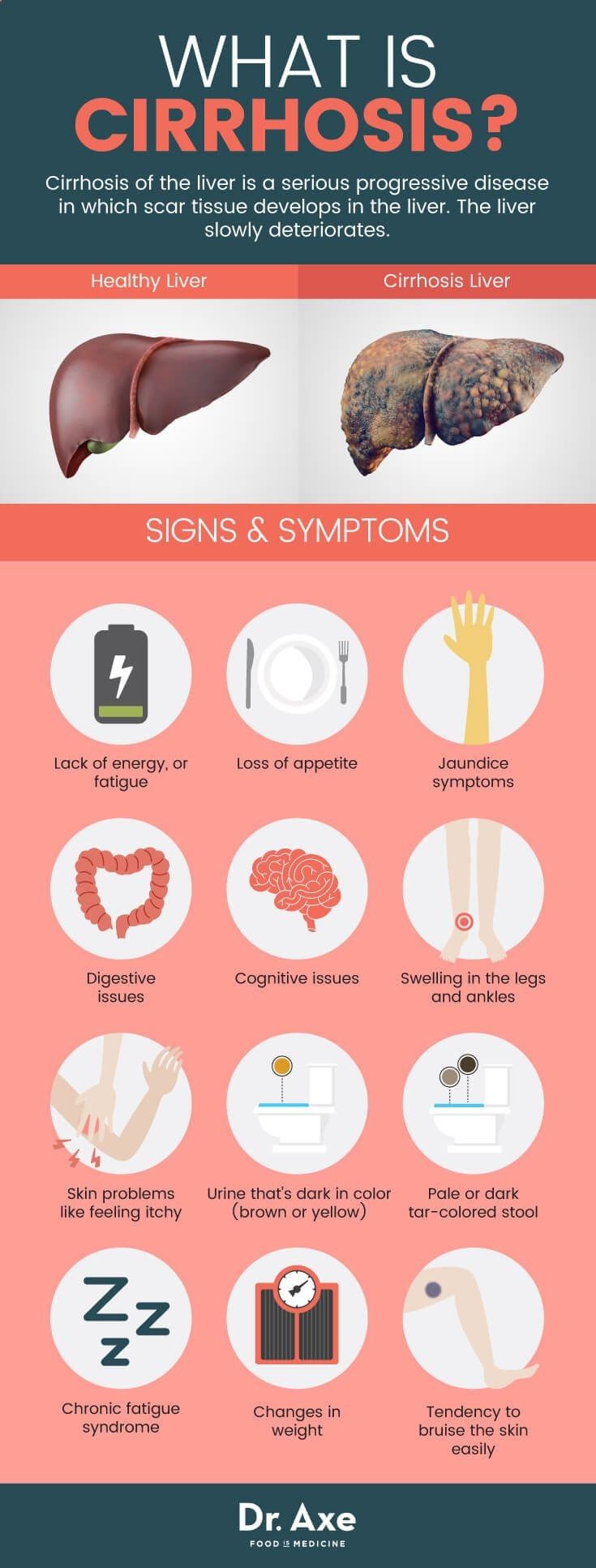
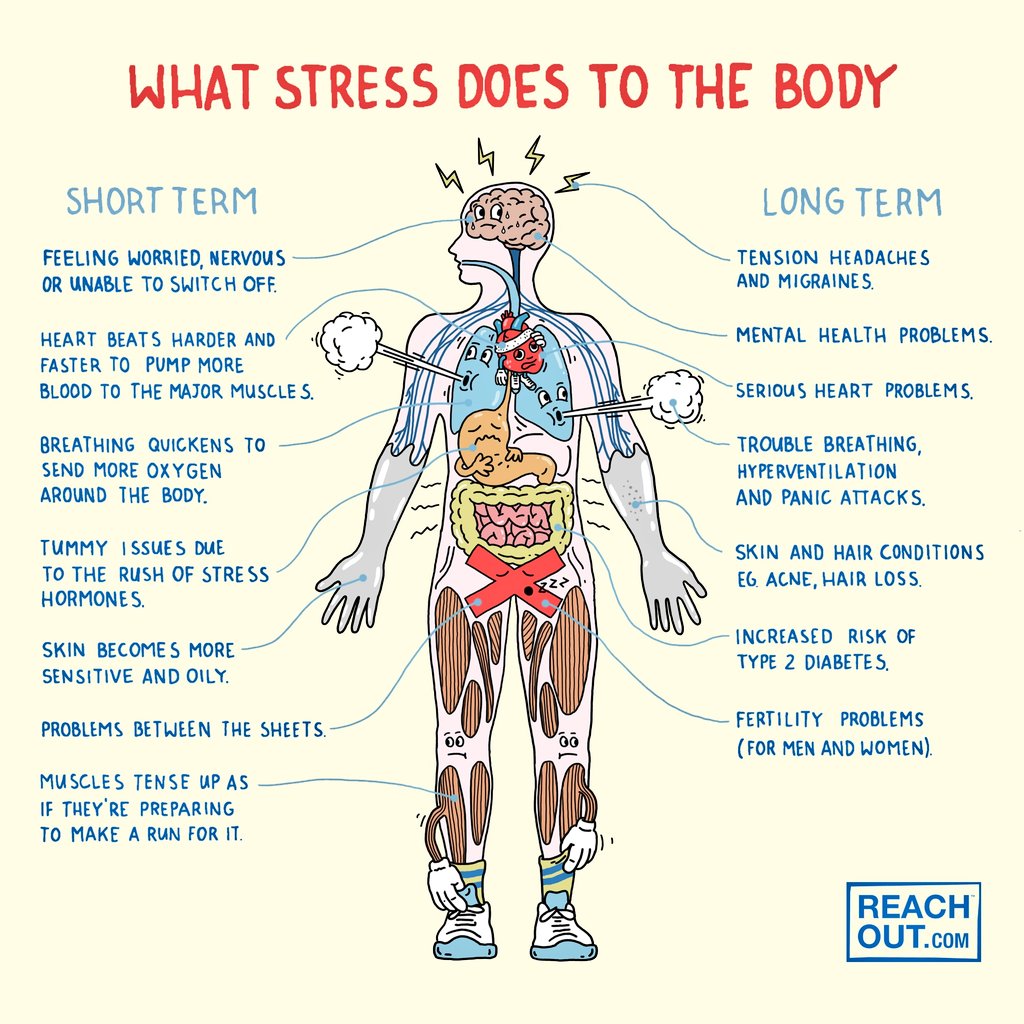



 For hemochromatosis, treatment is to remove blood to reduce the level of iron in your blood. For Wilson disease, treatment is medicines to remove copper from your body and zinc to prevent absorption of cooper. For cystic fibrosis, medications are prescribed to improve lung function, methods to clear mucous and treatment of complications. Treatment for glycogen storage diseases that involve the liver is to keep glucose at the right level.
For hemochromatosis, treatment is to remove blood to reduce the level of iron in your blood. For Wilson disease, treatment is medicines to remove copper from your body and zinc to prevent absorption of cooper. For cystic fibrosis, medications are prescribed to improve lung function, methods to clear mucous and treatment of complications. Treatment for glycogen storage diseases that involve the liver is to keep glucose at the right level. Other treatments include implantation of devices to help pump blood or monitor heart rhythm, surgeries to unblock arteries or replace or repair heart valves and transplant surgery to replace your heart.
Other treatments include implantation of devices to help pump blood or monitor heart rhythm, surgeries to unblock arteries or replace or repair heart valves and transplant surgery to replace your heart.
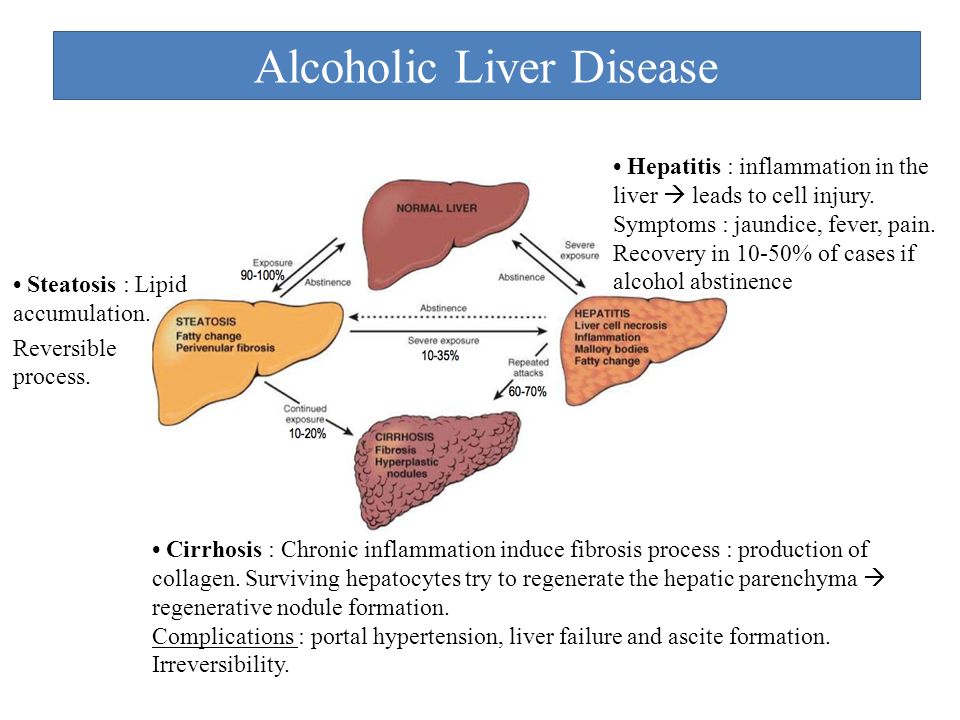 A drink is a glass of wine or a 12-ounce can of beer or a 1.5 ounce serving of hard liquor. If you have liver disease, you should not drink alcohol at all.
A drink is a glass of wine or a 12-ounce can of beer or a 1.5 ounce serving of hard liquor. If you have liver disease, you should not drink alcohol at all. This is an imaging test that uses X-rays and a
This is an imaging test that uses X-rays and a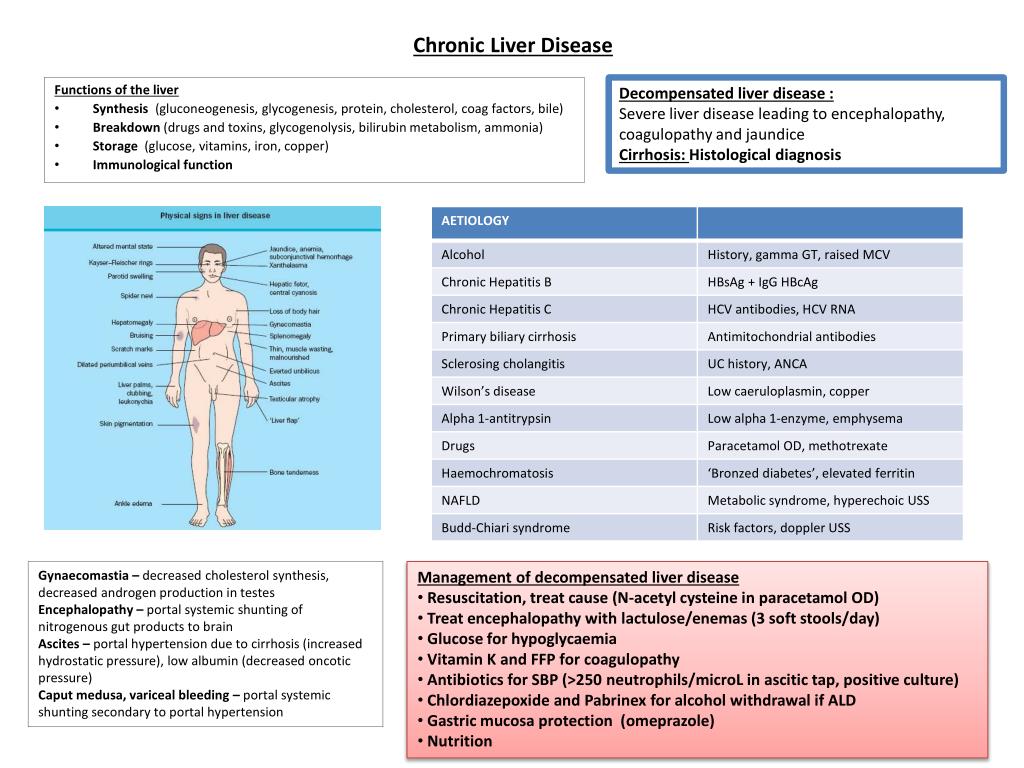 A lighted
A lighted